Stuck between loving farmhouse charm and craving modern sleekness? Transitional kitchens solve that dilemma perfectly. They're all about mixing the best elements from both styles – think warm wood with crisp whites, brass accents with contemporary lines, and cozy textures alongside clean finishes. These 20 designs prove you don't have to choose sides. From sage green cabinets to statement lighting, we'll show you how to create a kitchen that's both timeless and fresh.
1. Warm Wood and White Transitional Kitchen
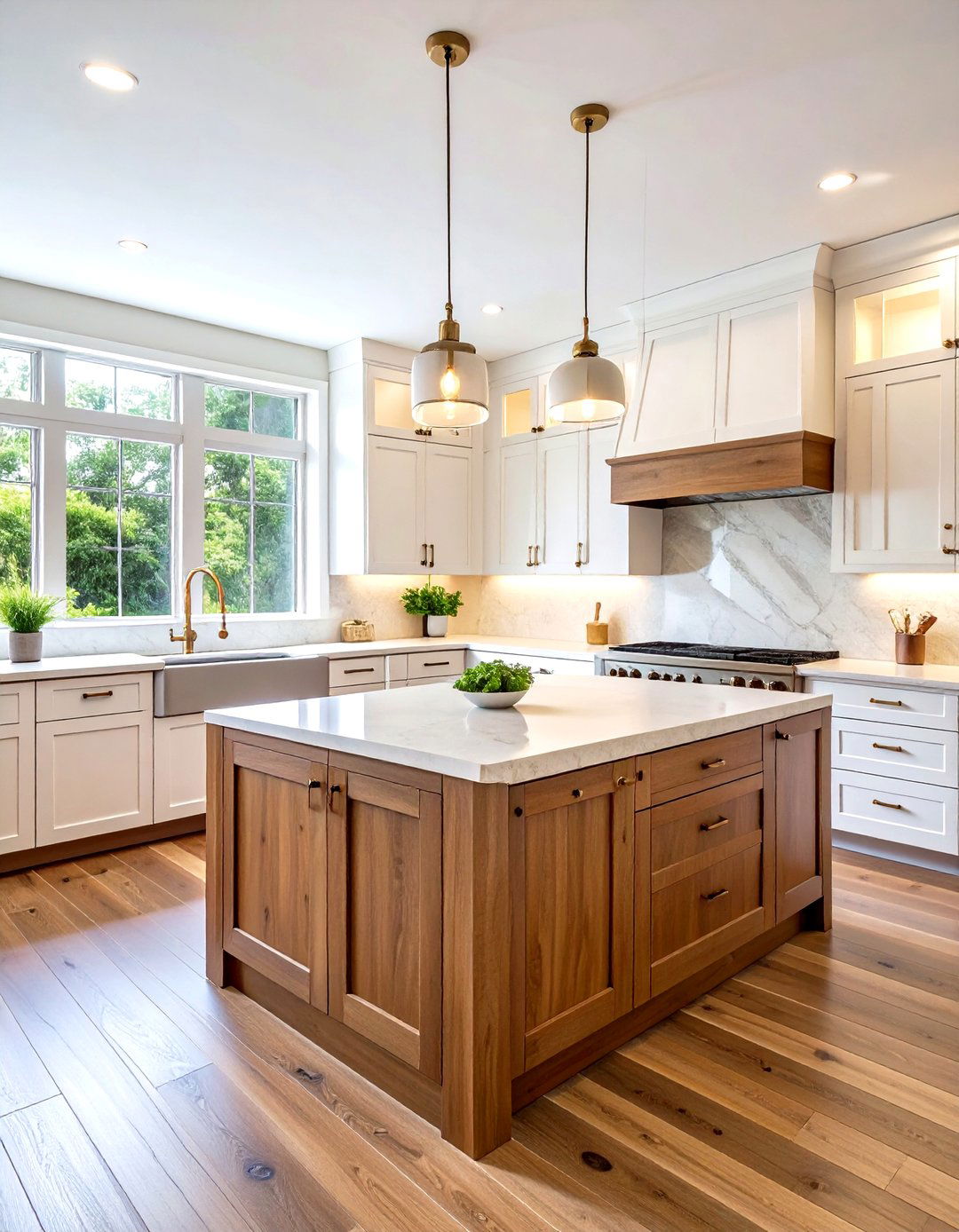
A warm wood and white transitional kitchen creates an inviting atmosphere through the masterful balance of natural timber tones and crisp white elements. This design typically features white shaker-style perimeter cabinets paired with a stunning wood island, often crafted from rich walnut or oak with visible grain patterns. The warm wood brings organic texture and traditional charm, while white cabinetry maintains the space's bright, contemporary feel. Natural stone countertops in soft cream or light gray complement both materials beautifully. Brass or brushed gold hardware adds subtle luxury, while pendant lighting with mixed materials bridges the color palette. Wood flooring in honey or medium tones grounds the space, creating a cohesive flow that feels both sophisticated and welcoming for family gatherings.
2. Two-Tone Transitional Kitchen with Contrasting Islands
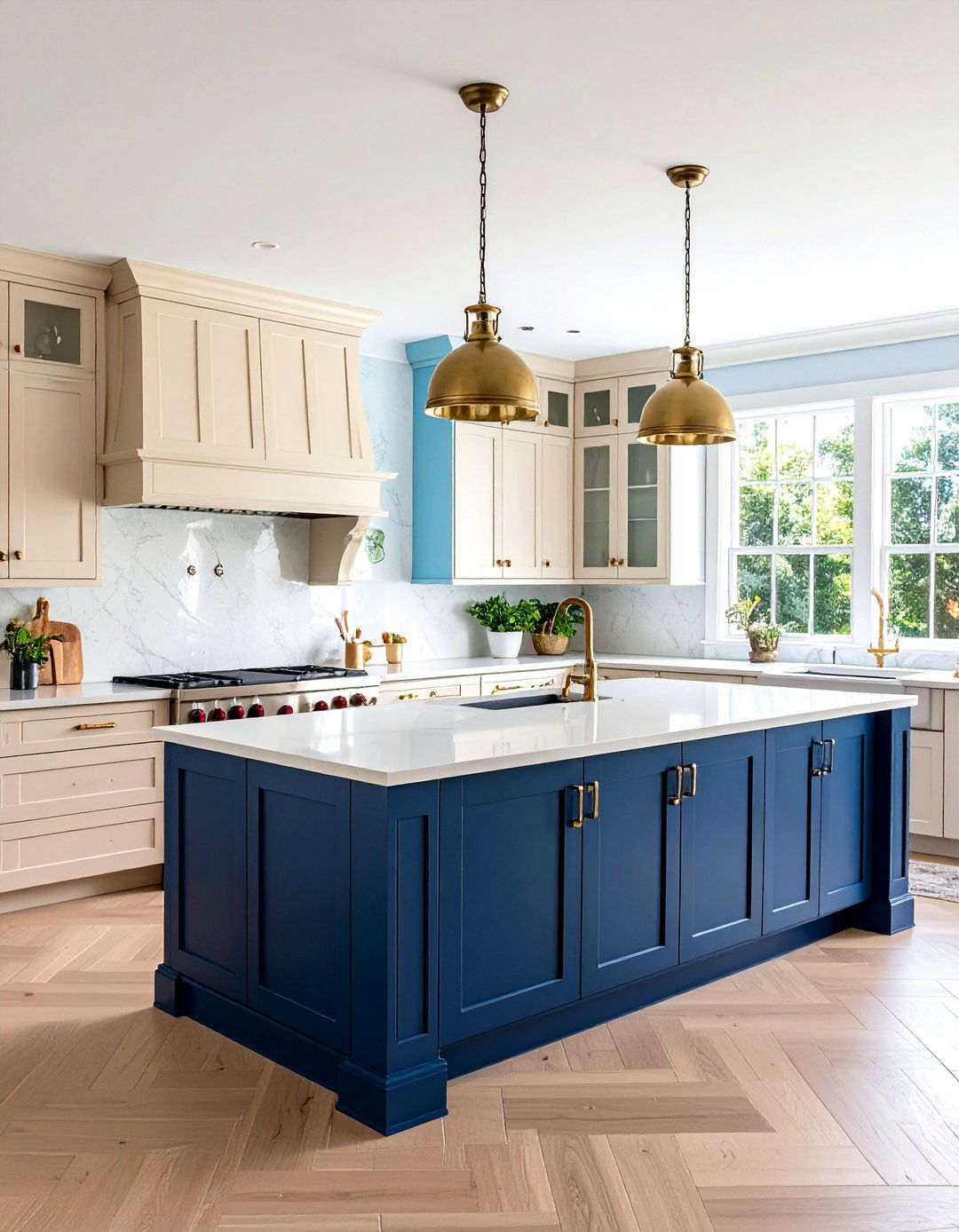
This two-tone transitional kitchen design creates visual interest through carefully planned color contrasts that maintain sophisticated harmony. The approach typically features light perimeter cabinets in cream or soft gray paired with a dramatically darker island in deep navy, charcoal, or rich espresso. This contrast serves as a natural focal point while maintaining the transitional style's balanced aesthetic. Quartz or granite countertops in neutral tones unify the different cabinet colors, while consistent hardware in brushed nickel or matte black provides cohesive styling. The key lies in choosing colors that complement rather than compete, ensuring the darker island feels intentional rather than disconnected. Subtle traditional details like crown molding or decorative panels maintain classic appeal while clean lines keep the overall look contemporary and fresh.
3. Soft Sage Green Transitional Kitchen Design
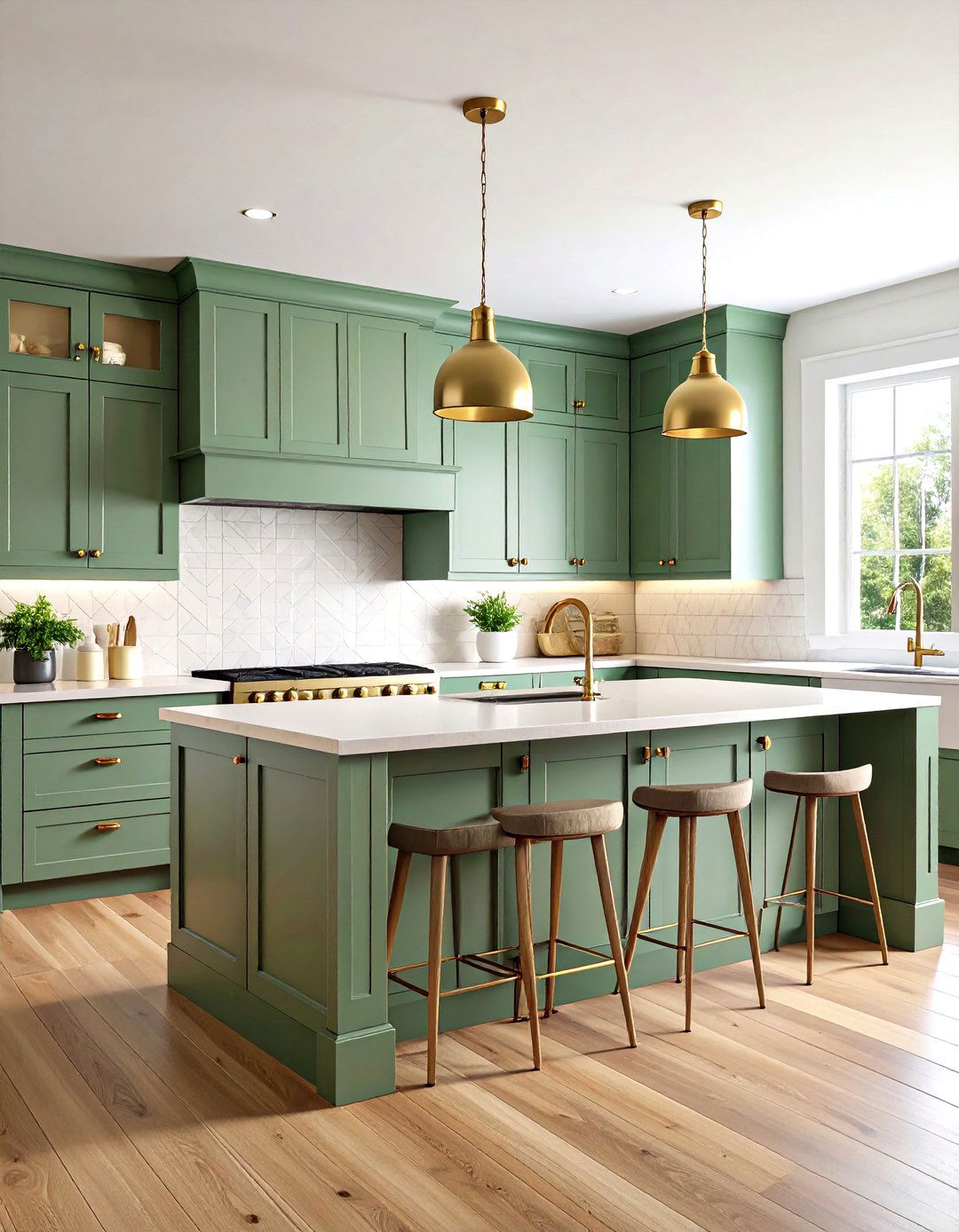
A soft sage green transitional kitchen embraces the growing trend toward earthy, calming colors while maintaining timeless appeal. This design features cabinets painted in muted sage tones that evoke nature's tranquility, perfectly balanced with warm white or cream accents on upper cabinets or trim details. Natural stone countertops in creamy quartzite or soft marble complement the green beautifully, while warm brass hardware adds luxurious touches. The color palette extends to subtle sage-tinted subway tiles or natural stone backsplashes that enhance the organic feel. Wood flooring in honey or light oak tones grounds the space, while pendant lighting in brass or natural materials reinforces the earthy aesthetic. This approach creates a sophisticated yet soothing environment that feels both contemporary and timelessly elegant.
4. Mixed Metal Transitional Kitchen with Layered Finishes
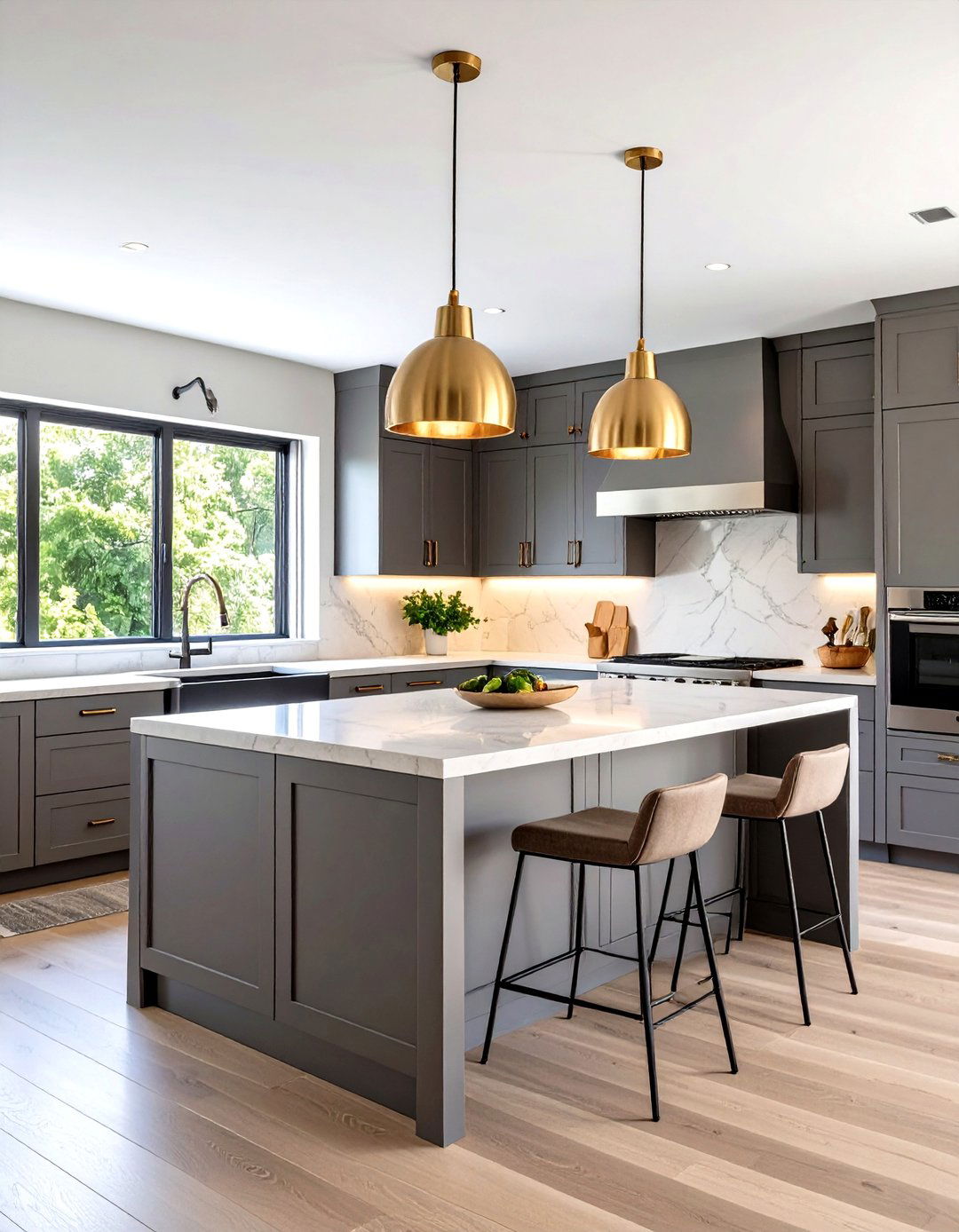
Embracing the trend of intentionally mixed metals, this transitional kitchen design creates depth through thoughtfully layered finishes that feel curated rather than matched. The approach combines warm brass pendant lighting with brushed nickel cabinet hardware and perhaps black iron bar stools, creating visual interest while maintaining cohesive style. Cabinet doors in soft gray or cream provide a neutral backdrop that allows the mixed metals to shine without overwhelming the space. Natural stone countertops with subtle veining tie the different finishes together harmoniously. The key to success lies in limiting the palette to two or three metals and ensuring each appears multiple times throughout the space. This creates a sophisticated, collected-over-time aesthetic that feels both intentional and effortlessly elegant, perfectly embodying transitional style's balanced approach.
5. Shaker Style Transitional Kitchen with Modern Hardware

This shaker style transitional kitchen elevates the classic cabinet design with contemporary hardware that creates sophisticated contrast. Traditional five-piece shaker doors provide timeless appeal and clean lines, while sleek bar pulls in matte black or brushed gold offer modern sophistication. The cabinet color palette typically features soft neutrals like greige, warm white, or pale blue that enhance the shaker style's inherent elegance. Quartz countertops with subtle patterns complement the clean cabinet lines, while a neutral subway tile or natural stone backsplash maintains the balanced aesthetic. The hardware becomes a key design element, with long horizontal pulls emphasizing the doors' clean geometry. Under-cabinet lighting highlights the quality craftsmanship, while pendant lights over the island continue the modern hardware theme, creating a cohesive and sophisticated kitchen environment.
6. Natural Stone Backsplash Transitional Kitchen
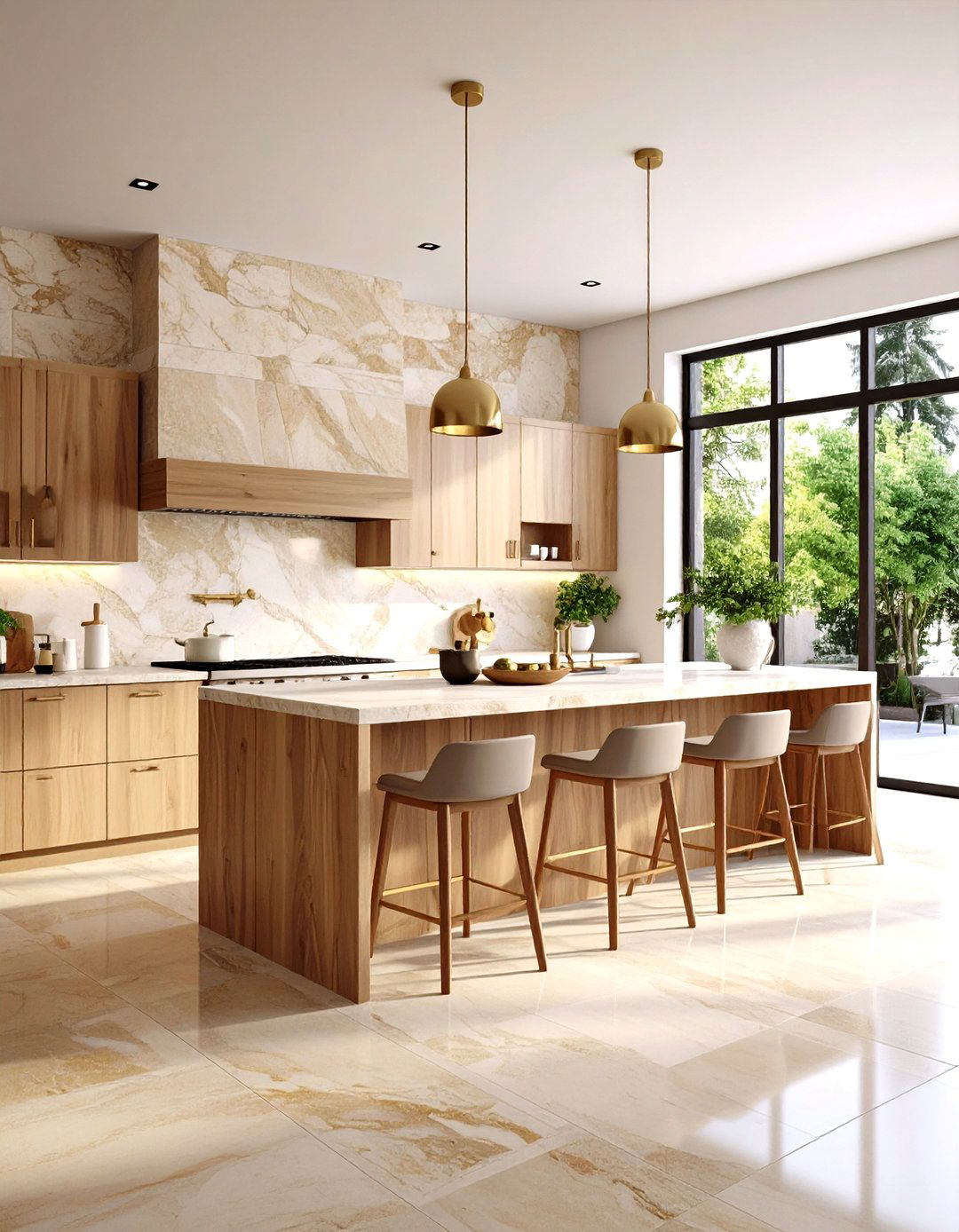
A natural stone backsplash transitional kitchen celebrates organic materials while maintaining sophisticated design balance. This approach features beautiful natural stone in travertine, marble, or limestone that adds texture and warmth to the space. The stone's inherent variations and natural patterns provide visual interest without overwhelming the clean transitional aesthetic. Cabinet colors in soft whites, creams, or light grays allow the stone to become a beautiful focal point while maintaining the style's characteristic balance. The stone often extends from counter to ceiling, creating a dramatic yet elegant statement wall. Complementary natural materials like wood islands or brass fixtures enhance the organic feel. Lighting becomes crucial, with under-cabinet fixtures highlighting the stone's natural beauty while pendant lights add atmospheric ambiance, creating a kitchen that feels both luxurious and naturally grounded.
7. Open Shelving Transitional Kitchen with Mixed Storage
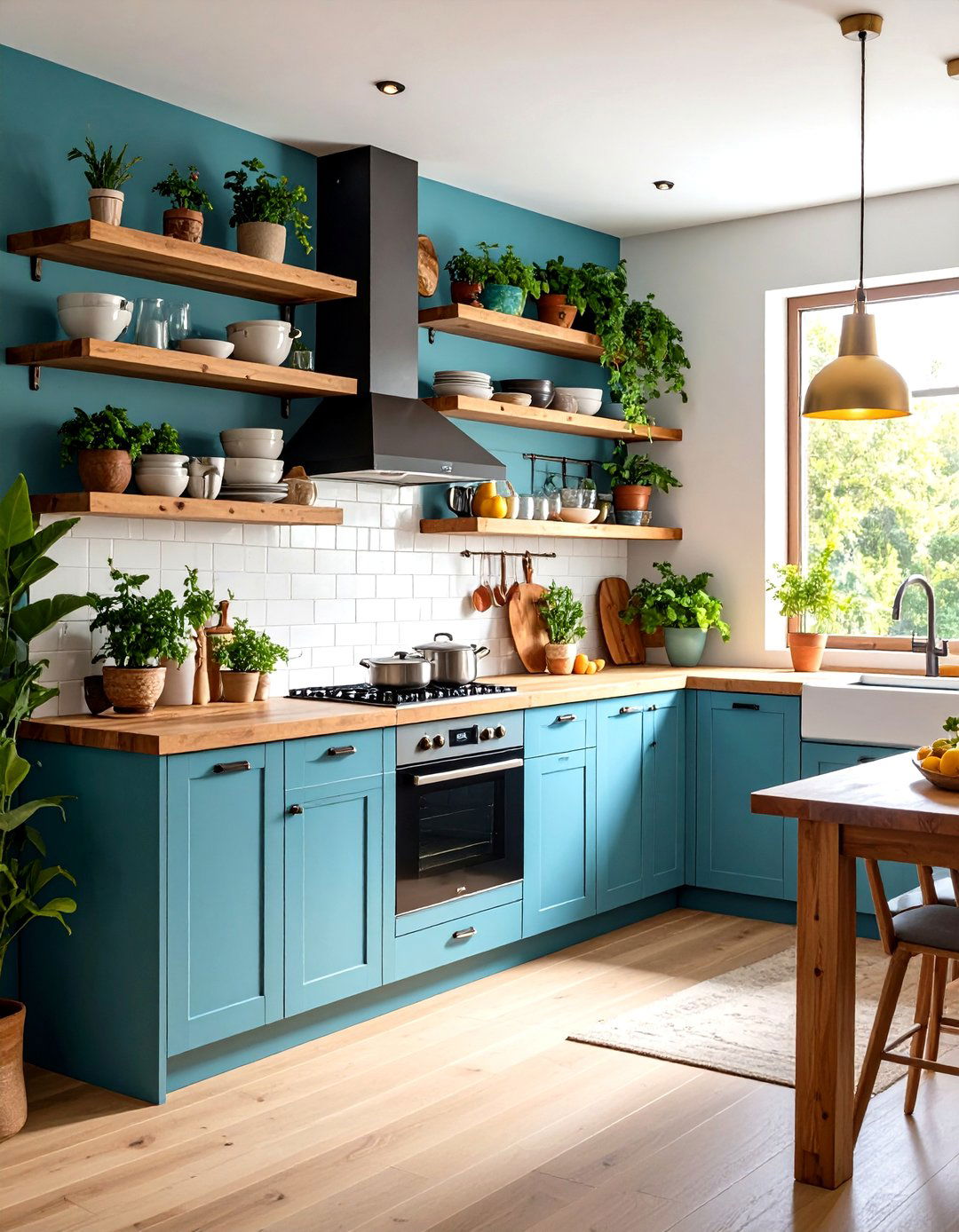
This open shelving transitional kitchen design combines traditional closed storage with contemporary open display areas for functional beauty. The approach typically features a mix of upper cabinets and floating shelves in warm wood or painted finishes that complement the overall color scheme. Open shelves provide space to display beautiful dishware, glassware, or decorative objects while maintaining easy access to frequently used items. The key lies in thoughtful styling that balances practical storage with aesthetic appeal. Lower cabinets provide concealed storage for less attractive necessities, while open areas showcase personality and warmth. Natural materials like reclaimed wood shelves against painted cabinet backgrounds create pleasant contrast. Careful lighting design illuminates both functional areas and displayed objects, while maintaining the transitional style's emphasis on both beauty and practicality throughout the space.
8. Curved Edge Transitional Kitchen with Organic Elements
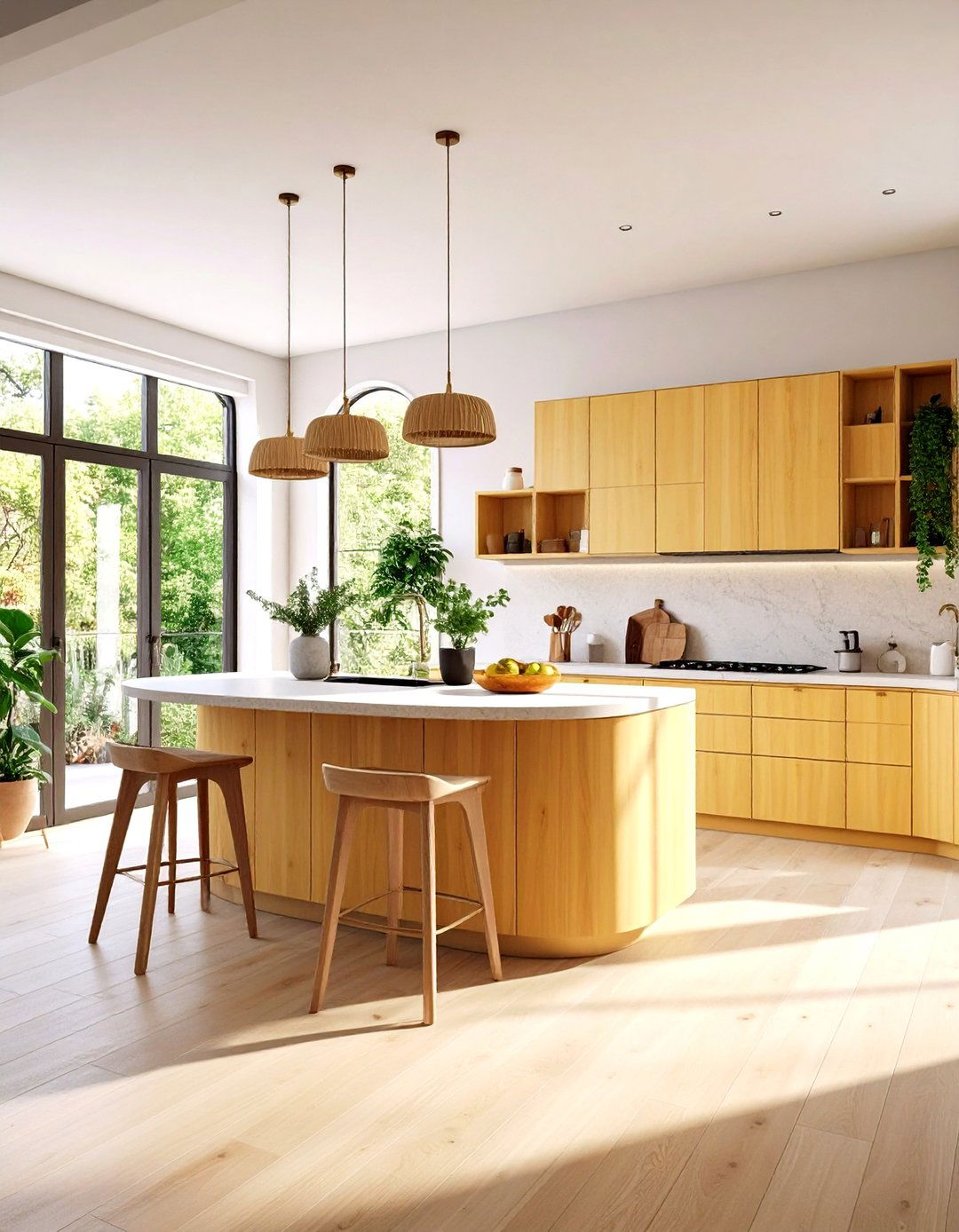
Embracing the trend toward softer, more organic forms, this curved edge transitional kitchen features rounded countertop edges and flowing island designs that create warmth and sophistication. The approach moves away from sharp angles toward gentler curves that feel more inviting and contemporary. Island designs might feature oval or rounded ends, while countertop edges showcase subtle curves rather than stark right angles. This softness extends to other elements like arched cabinet details or rounded hardware that maintains the flowing aesthetic. Natural materials like wood and stone complement the organic approach, while neutral color palettes in warm whites, soft grays, or earthy tones enhance the soothing quality. Lighting choices often include pendant fixtures with curved silhouettes or organic forms that reinforce the design theme. The result creates a kitchen environment that feels both sophisticated and naturally comfortable.
9. Brass Accent Transitional Kitchen with Warm Tones
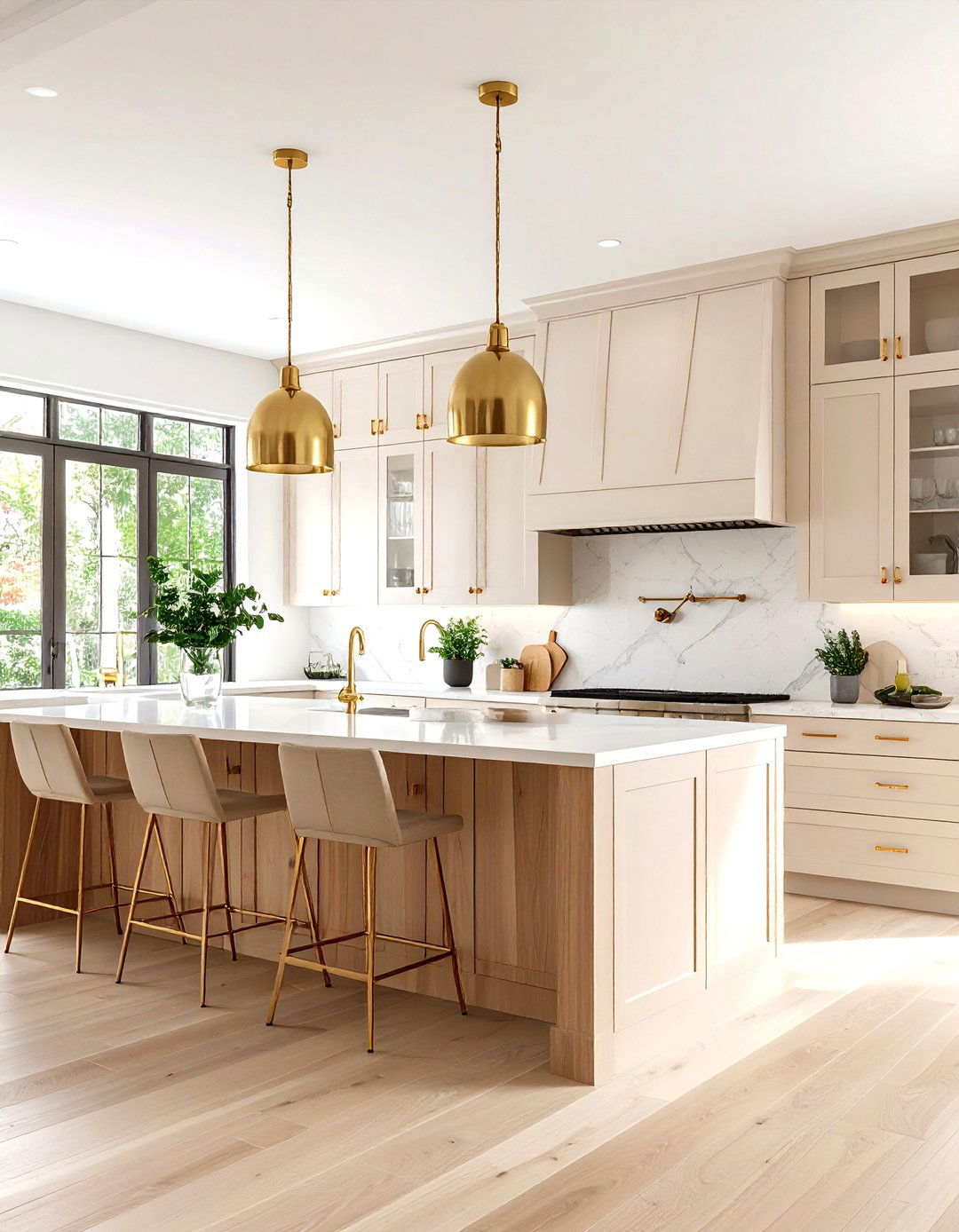
A brass accent transitional kitchen creates luxurious warmth through thoughtfully placed golden finishes that enhance without overwhelming the space. This design features brass pendant lighting, cabinet hardware, and fixtures that add rich warmth to neutral cabinet colors in cream, soft gray, or warm white. The brass tones complement natural materials beautifully, particularly warm wood islands or accents that enhance the cozy, sophisticated atmosphere. Countertops in warm quartzite or creamy marble provide elegant surfaces that reflect the brass's golden tones. The key lies in balancing the brass elements throughout the space rather than concentrating them in one area, creating cohesive flow and intentional design. Natural light becomes especially important, as it enhances the brass's warm glow while illuminating the space beautifully. This approach creates a kitchen that feels both timeless and distinctly current.
10. Marble Waterfall Island Transitional Kitchen
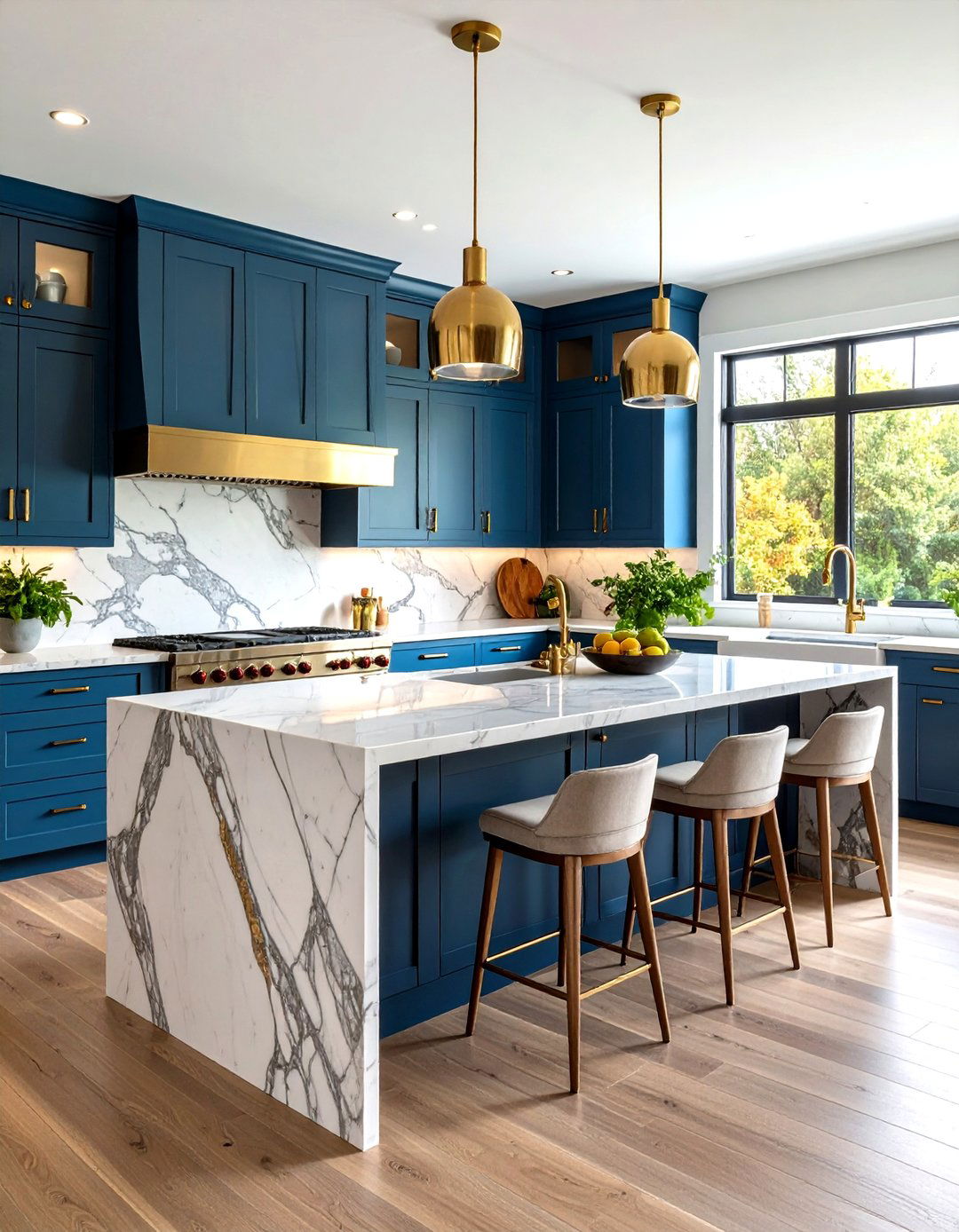
This marble waterfall island transitional kitchen creates a stunning focal point through dramatic stone application that maintains sophisticated balance. The waterfall edge, where countertop material flows continuously down the island's sides, creates architectural interest while showcasing beautiful marble veining. This bold element requires careful balance with simpler surrounding elements to maintain transitional style's characteristic harmony. Perimeter cabinets in neutral colors allow the marble island to command attention without competing elements. The stone selection becomes crucial, with subtle veining providing elegance without overwhelming the space. Complementary materials like warm wood accents or brass hardware enhance rather than compete with the marble's natural beauty. Lighting design becomes essential, illuminating the stone's patterns while providing functional task lighting. The result creates a kitchen with resort-like luxury that maintains everyday functionality and timeless appeal.
11. Textured Tile Transitional Kitchen with Pattern Play
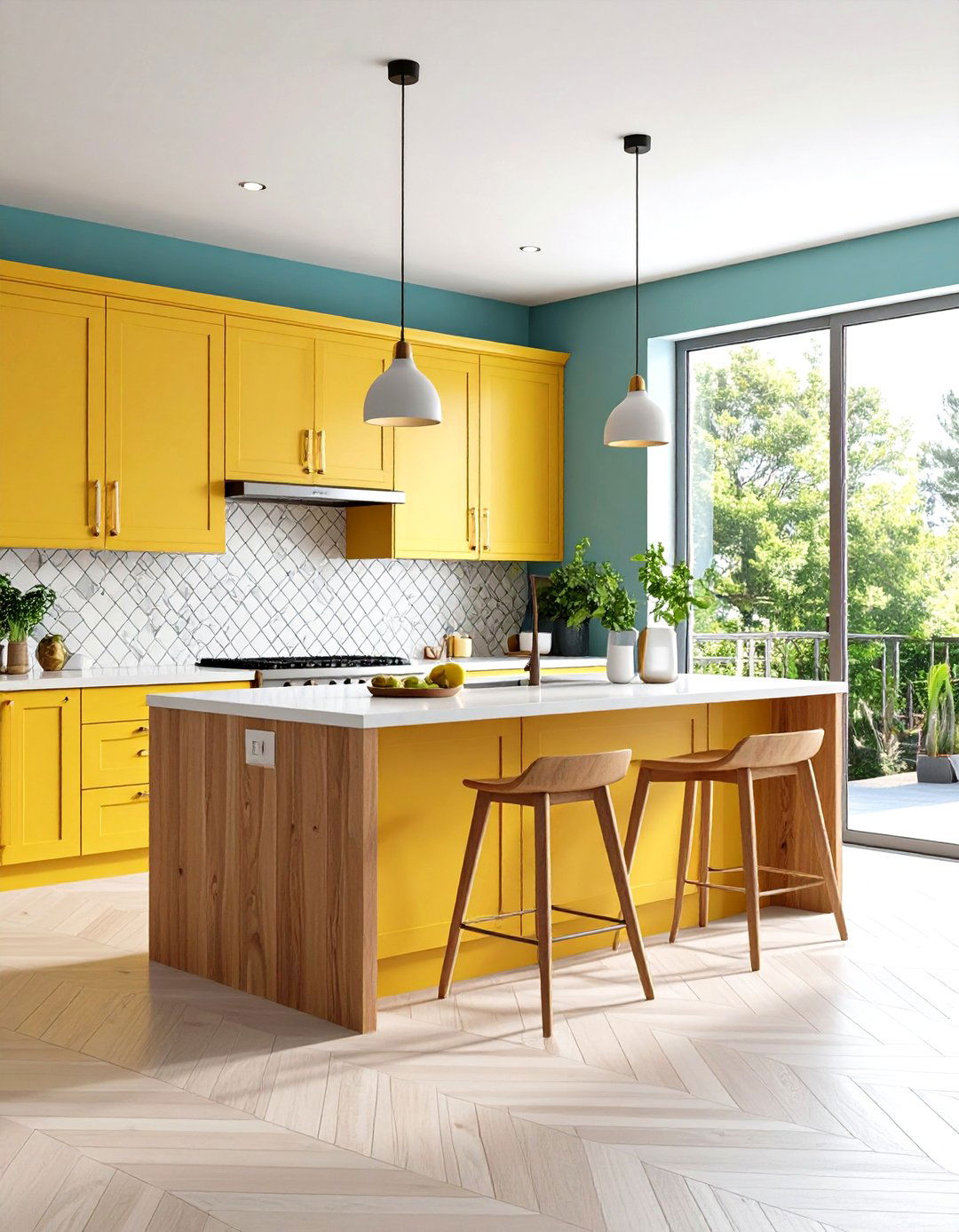
A textured tile transitional kitchen introduces visual interest through carefully selected tile patterns that add depth without overwhelming the balanced aesthetic. This approach might feature three-dimensional subway tiles, handmade ceramic tiles with subtle irregularities, or geometric patterns in neutral tones. The texture adds personality and contemporary flair while maintaining the transitional style's sophisticated restraint. Cabinet colors in soft neutrals provide calm backgrounds that allow the tile to create beautiful focal points. The key lies in choosing patterns that feel intentional rather than busy, maintaining the style's emphasis on balanced design. Natural materials like wood islands or stone countertops complement the tile's artisanal quality. Lighting becomes important for highlighting the texture's dimensional qualities while providing functional illumination. This creates a kitchen environment that feels both current and timelessly elegant through thoughtful material selection.
12. Concealed Appliance Transitional Kitchen Design
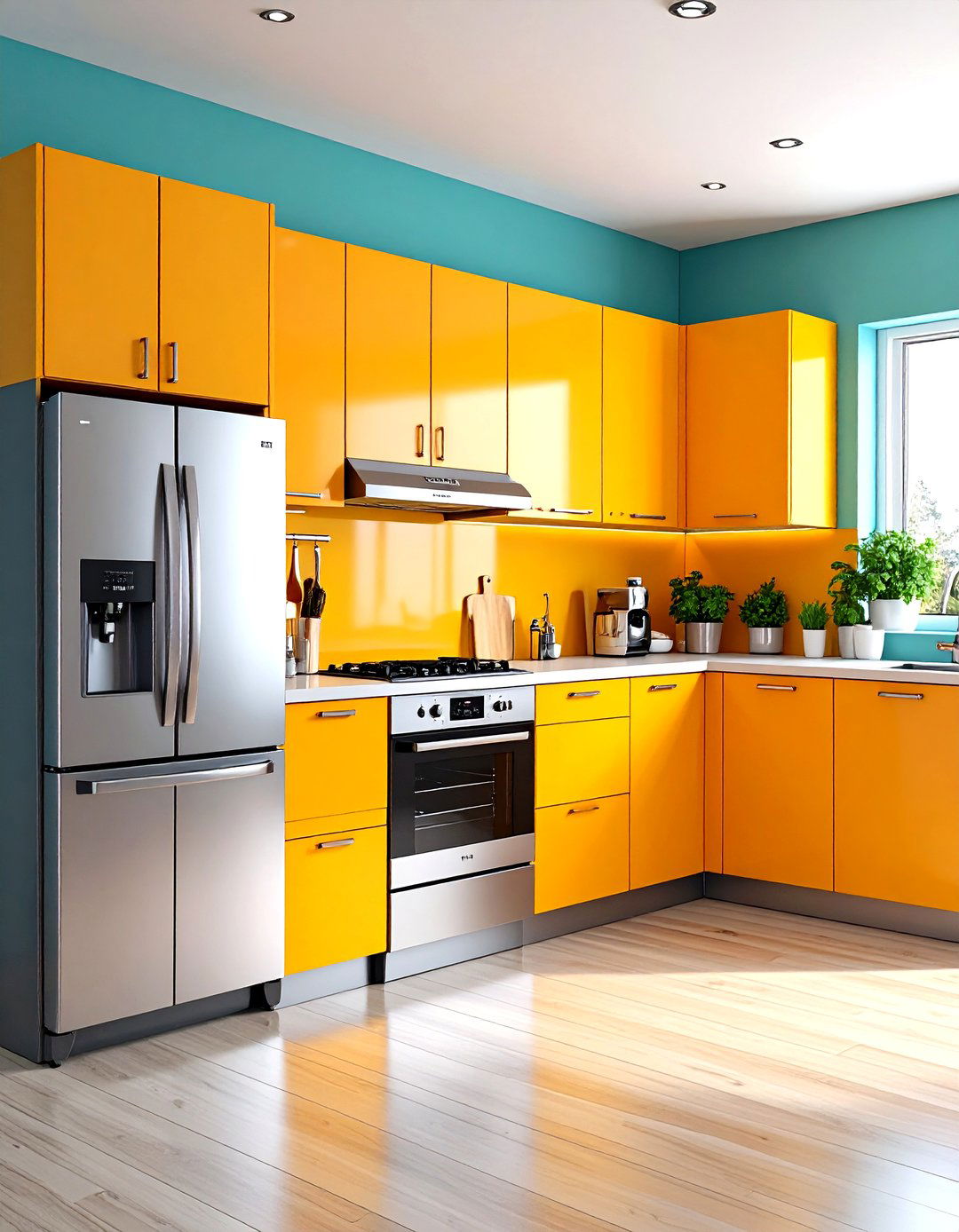
This concealed appliance transitional kitchen creates seamless sophistication through integrated appliances that maintain clean visual lines while providing maximum functionality. The approach features panel-ready refrigerators, dishwashers, and other appliances hidden behind matching cabinet faces for uninterrupted design flow. This concept aligns perfectly with transitional style's emphasis on balanced, uncluttered aesthetics while embracing contemporary convenience. Cabinet design becomes crucial, with high-quality hardware and construction ensuring smooth operation of concealed elements. The result creates kitchen spaces that feel more like elegant living areas than utilitarian work zones. Countertops and backsplashes gain greater visual prominence when appliances fade into the background, allowing beautiful materials to shine. Careful planning ensures easy access and functionality while maintaining the sophisticated appearance. This approach creates kitchens that feel both supremely functional and elegantly refined.
13. Exposed Beam Transitional Kitchen with Rustic Elements
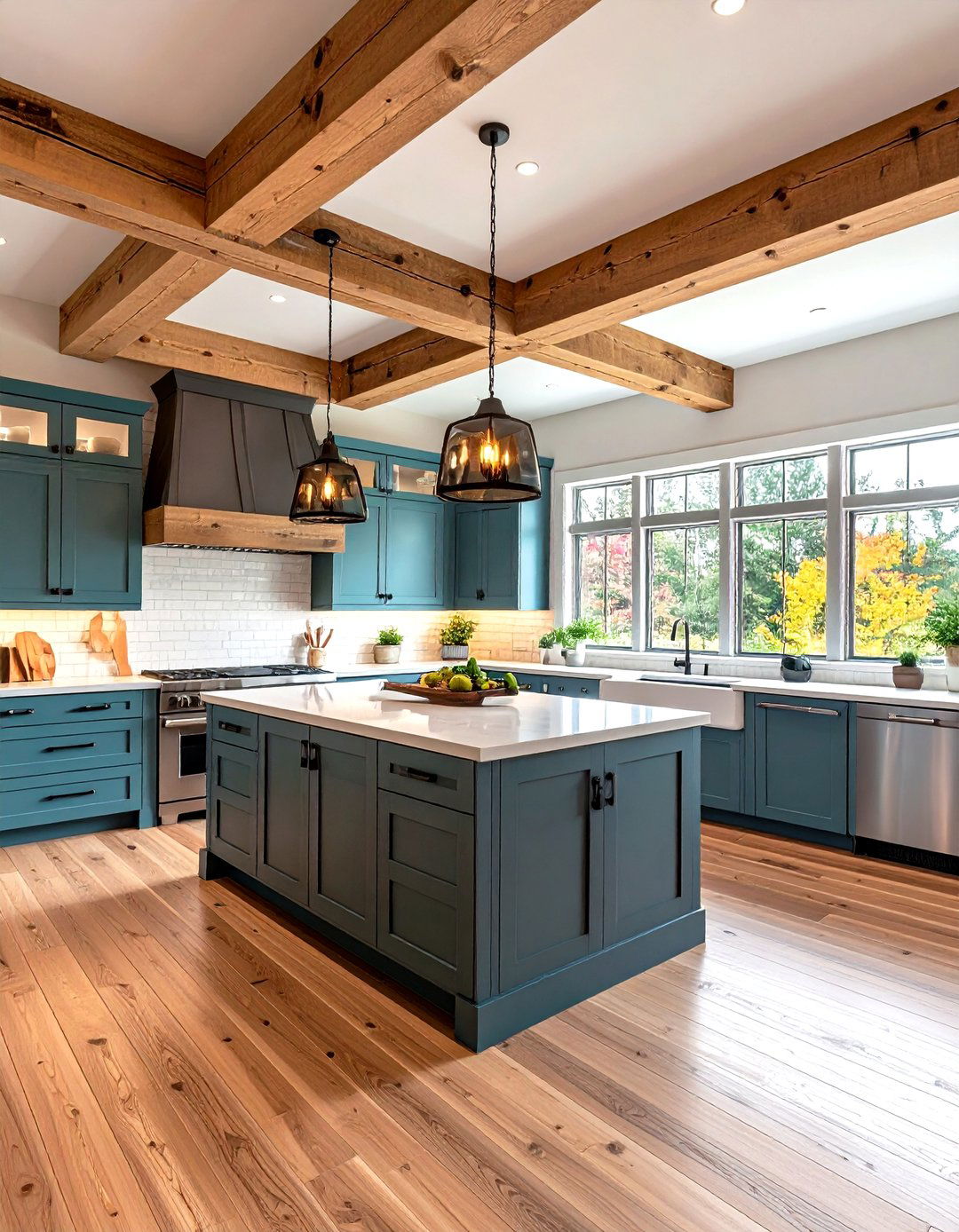
An exposed beam transitional kitchen incorporates architectural elements that add character while maintaining sophisticated balance between rustic charm and contemporary functionality. Natural wood beams, whether original or added, provide structural visual interest and warmth that complements the transitional style's appreciation for both traditional and modern elements. The beams typically feature natural finishes that showcase wood grain and character, balanced by cleaner contemporary elements elsewhere in the space. Cabinet choices in painted finishes provide pleasant contrast to the natural wood, while maintaining the sophisticated neutral palette characteristic of transitional design. Lighting design becomes important, with fixtures that complement rather than compete with the architectural elements. Natural materials like stone countertops and hardwood floors enhance the organic feeling while maintaining elegance. This creates kitchen environments that feel both grounded and sophisticated.
14. Glass Cabinet Transitional Kitchen with Display Elements
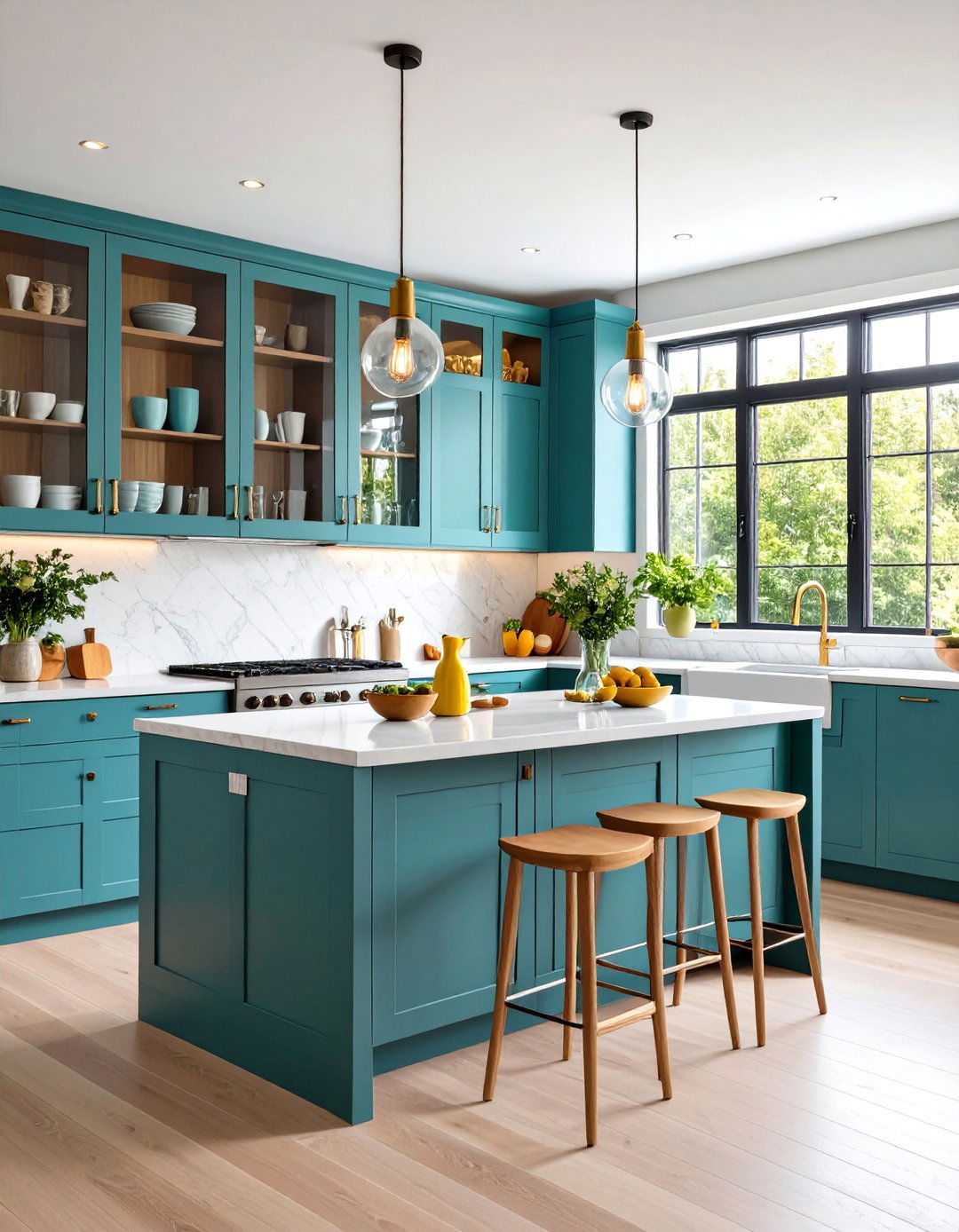
This glass cabinet transitional kitchen design incorporates transparent upper cabinets that create visual lightness while providing beautiful display opportunities for dishes and glassware. The approach typically features glass doors on selected upper cabinets, allowing glimpse of curated contents while maintaining sophisticated storage solutions. This element adds traditional elegance reminiscent of butler's pantries while keeping the space feeling open and contemporary. Interior cabinet lighting becomes crucial, creating gentle illumination that showcases displayed items beautifully. The glass doors require thoughtful organization and attractive contents, encouraging mindful curation of dishes and glassware. Lower cabinets typically feature solid doors for concealing less attractive necessities. Frame styles can vary from traditional mullions to sleek modern profiles, depending on the desired balance between classic and contemporary elements. This creates kitchens that feel both functional and elegantly curated.
15. Pantry Integration Transitional Kitchen Layout
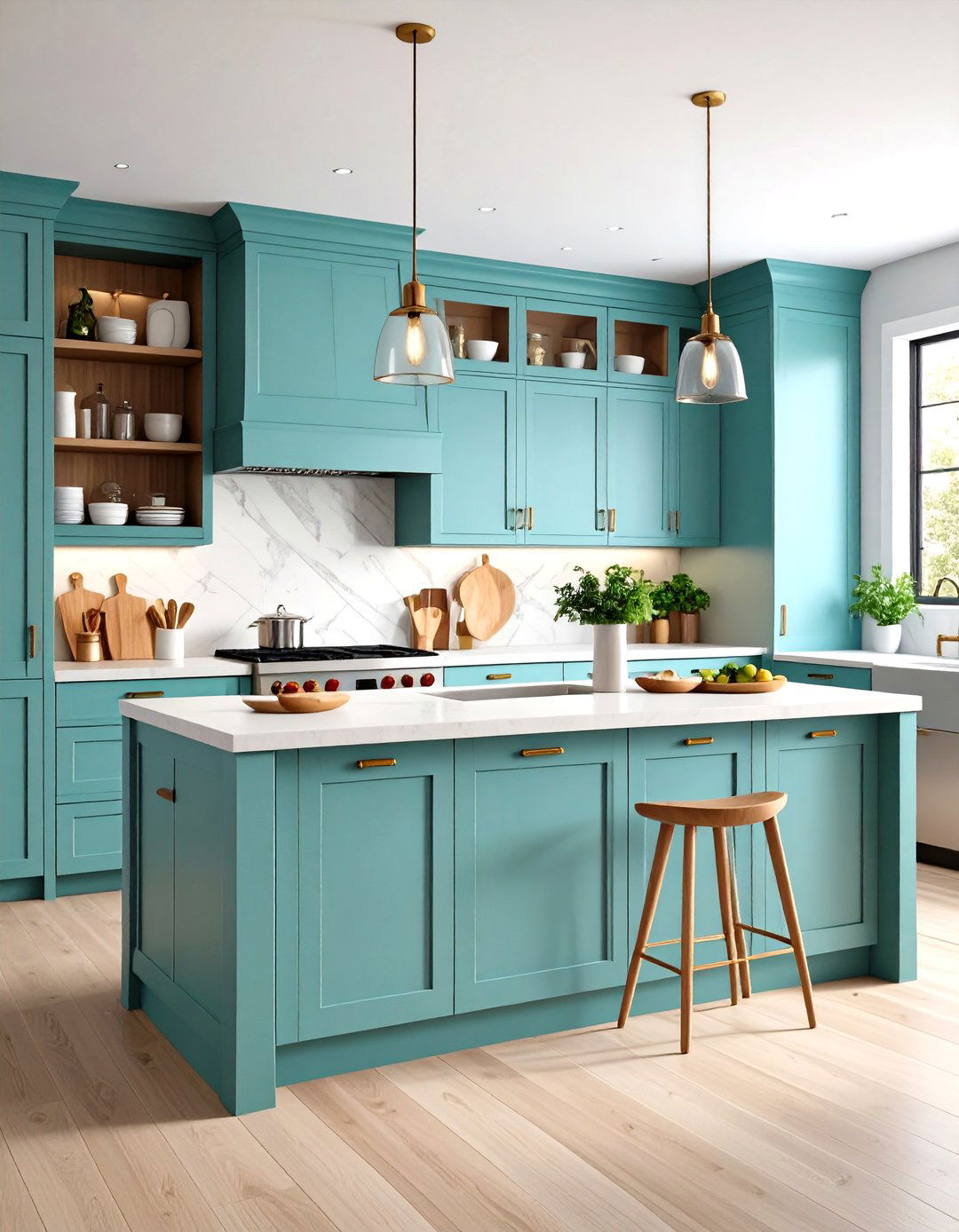
A pantry integration transitional kitchen design seamlessly incorporates storage solutions that maintain beautiful aesthetics while maximizing organizational functionality. This approach features walk-in pantries, butler's pantries, or floor-to-ceiling cabinet systems that provide extensive storage without compromising the kitchen's elegant appearance. The integration feels natural rather than added, with consistent materials, finishes, and design details flowing between kitchen and pantry areas. Door styles, hardware, and color palettes remain cohesive throughout, creating unified spaces that enhance rather than interrupt the overall design. Interior organization systems provide practical functionality while maintaining attractive appearances when doors are opened. Lighting design extends into storage areas, ensuring both beauty and practicality. This approach creates kitchen environments that accommodate extensive storage needs while maintaining the sophisticated, uncluttered appearance that defines excellent transitional design.
16. Multi-Zone Transitional Kitchen with Distinct Areas
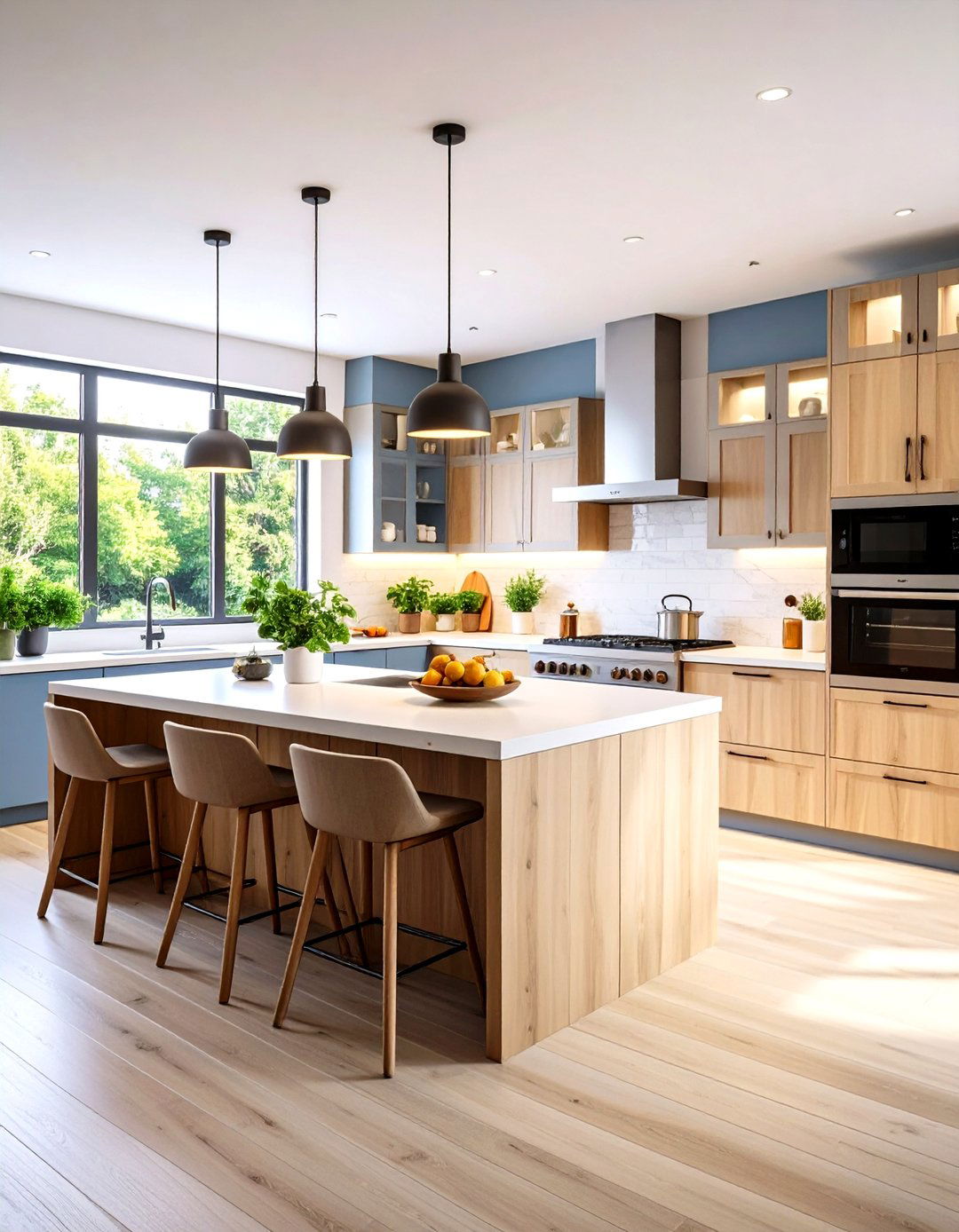
This multi-zone transitional kitchen creates distinct functional areas within the larger space while maintaining cohesive design flow throughout. The approach designates specific zones for cooking, preparation, cleaning, and socializing, each optimized for its particular function while contributing to the overall aesthetic. A large island might serve as the social hub with seating, while a separate prep area near the range provides focused cooking space. Different but complementary materials and finishes help define each zone without creating visual fragmentation. Lighting design becomes crucial, with task lighting for work areas and ambient lighting for social spaces creating appropriate atmospheres. Storage solutions are tailored to each zone's specific needs while maintaining consistent styling. This creates kitchen environments that accommodate multiple users and activities simultaneously while feeling cohesive and thoughtfully planned rather than cramped or chaotic.
17. Window Integration Transitional Kitchen with Natural Light

A window integration transitional kitchen maximizes natural light while creating beautiful connections between interior and exterior spaces. This design emphasizes large windows, perhaps extending backsplashes to window sills or incorporating windows into unexpected locations like over sinks facing gardens or courtyards. The approach celebrates natural light as a key design element while maintaining the transitional style's sophisticated balance. Window treatments, when needed, are typically minimal and elegant, allowing maximum light penetration while providing privacy options. Cabinet placement and kitchen layout optimize natural light distribution throughout the space. The connection to outdoor views becomes part of the overall aesthetic, with landscaping and exterior elements considered as part of the design composition. This creates kitchen environments that feel bright, welcoming, and connected to their surroundings while maintaining sophisticated interior design.
18. Sustainable Materials Transitional Kitchen Design

This sustainable materials transitional kitchen embraces eco-friendly choices while maintaining sophisticated aesthetics and timeless appeal. The approach incorporates reclaimed wood, recycled glass countertops, bamboo elements, or sustainably sourced materials that provide environmental benefits without compromising beauty. Cabinet construction might feature formaldehyde-free materials or locally sourced woods that reduce environmental impact. Energy-efficient appliances integrate seamlessly into the design while providing superior performance. The material choices feel intentional and beautiful rather than compromised, demonstrating that sustainable design can enhance rather than limit aesthetic possibilities. Natural finishes and minimal processing often enhance the materials' inherent beauty while reducing environmental impact. This approach creates kitchen environments that reflect contemporary values while maintaining the timeless elegance and sophisticated balance that defines excellent transitional design, proving that environmental responsibility and beautiful design complement each other perfectly.
19. Breakfast Nook Transitional Kitchen with Integrated Dining
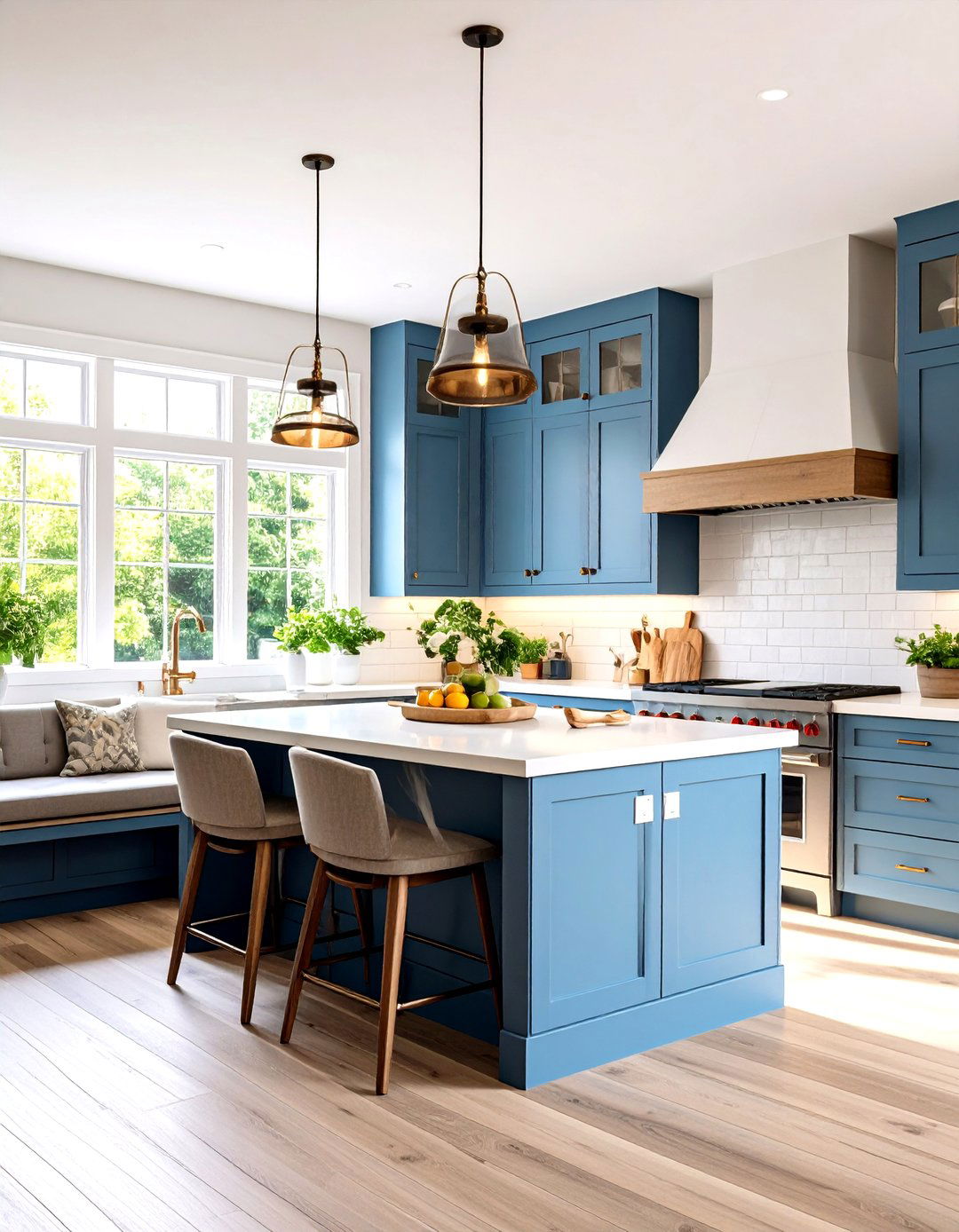
A breakfast nook transitional kitchen integrates intimate dining areas that create cozy gathering spaces while maintaining sophisticated design flow throughout the larger area. This approach typically features built-in banquettes, window seats, or designated dining zones that feel connected to but distinct from the main kitchen workspace. The nook area often incorporates softer elements like upholstered seating or curtains that add comfort while maintaining the transitional style's elegant aesthetic. Materials and finishes flow seamlessly between kitchen and dining areas, creating unified spaces that feel naturally connected. Lighting design creates appropriate ambiance for both cooking and dining activities, often featuring pendant lights or chandeliers that define the dining space. Storage integration might include built-in benches with hidden compartments or nearby cabinetry for table linens and serving pieces. This creates kitchen environments that encourage lingering and conversation while maintaining sophisticated functionality throughout.
20. Statement Lighting Transitional Kitchen with Dramatic Fixtures
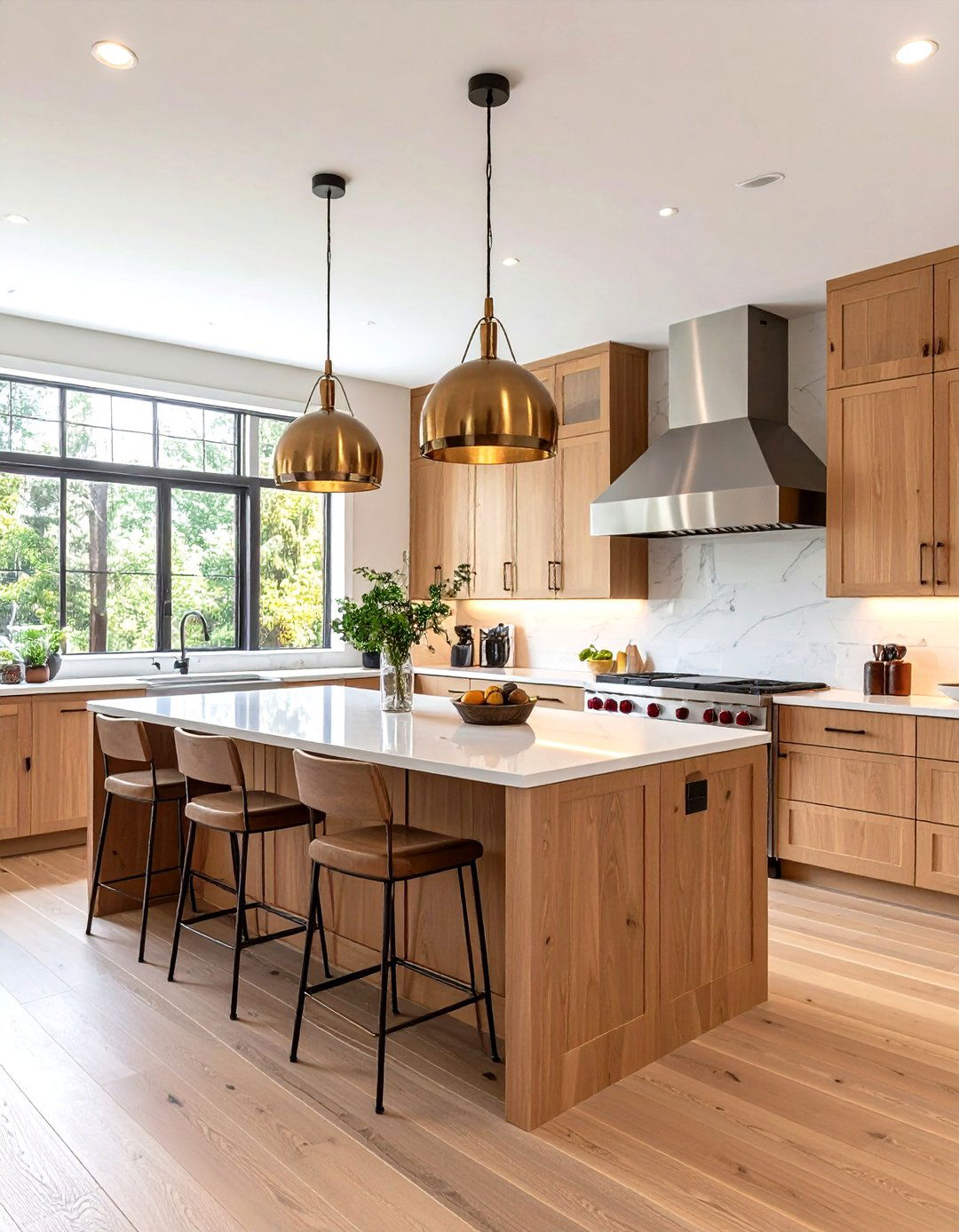
This statement lighting transitional kitchen features dramatic light fixtures that serve as sculptural elements while providing excellent illumination and maintaining sophisticated design balance. The approach might include oversized pendant lights over islands, unique chandeliers in dining areas, or architectural lighting elements that create visual interest. The fixtures become focal points that express personality while complementing rather than overwhelming other design elements. Materials often incorporate mixed finishes like brass and black iron, or organic materials like wood and rope that enhance the transitional style's emphasis on natural elements. Scale becomes important, with fixtures sized appropriately for their spaces while creating appropriate visual weight. Multiple lighting layers provide both task and ambient illumination while the statement pieces add character and sophistication. This creates kitchen environments that feel both functional and dramatically beautiful, demonstrating how lighting can elevate transitional design from simply pleasant to truly memorable.
Conclusion:
Transitional kitchen design offers the perfect solution for homeowners seeking spaces that balance timeless elegance with contemporary functionality. These twenty ideas demonstrate how thoughtfully blending traditional elements with modern features creates kitchens that feel both sophisticated and welcoming. Whether incorporating warm wood tones, dramatic lighting, or sustainable materials, each approach maintains the style's characteristic harmony while expressing individual personality. The beauty of transitional design lies in its flexibility and enduring appeal, creating kitchens that accommodate changing needs while remaining stylistically relevant for years to come.


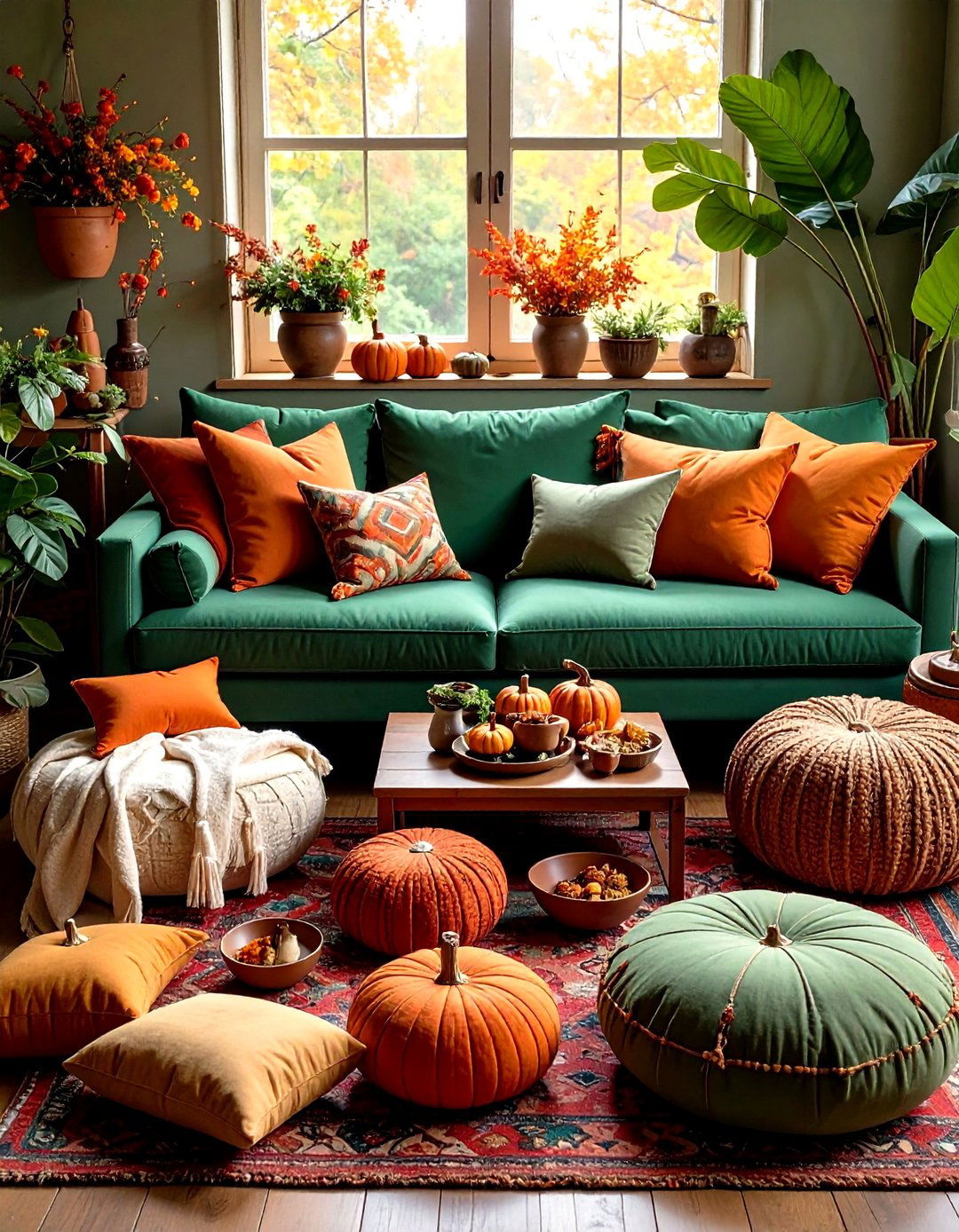
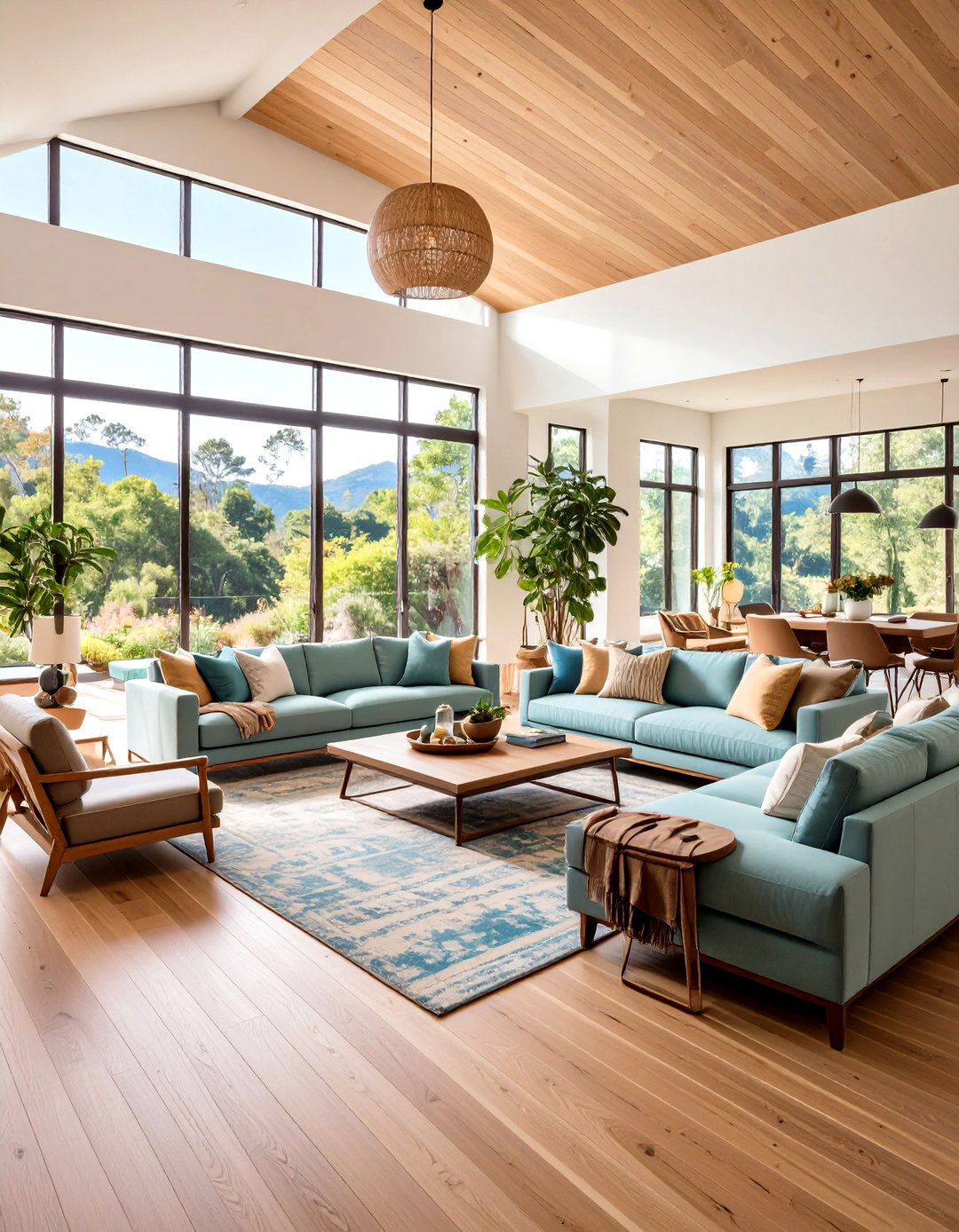
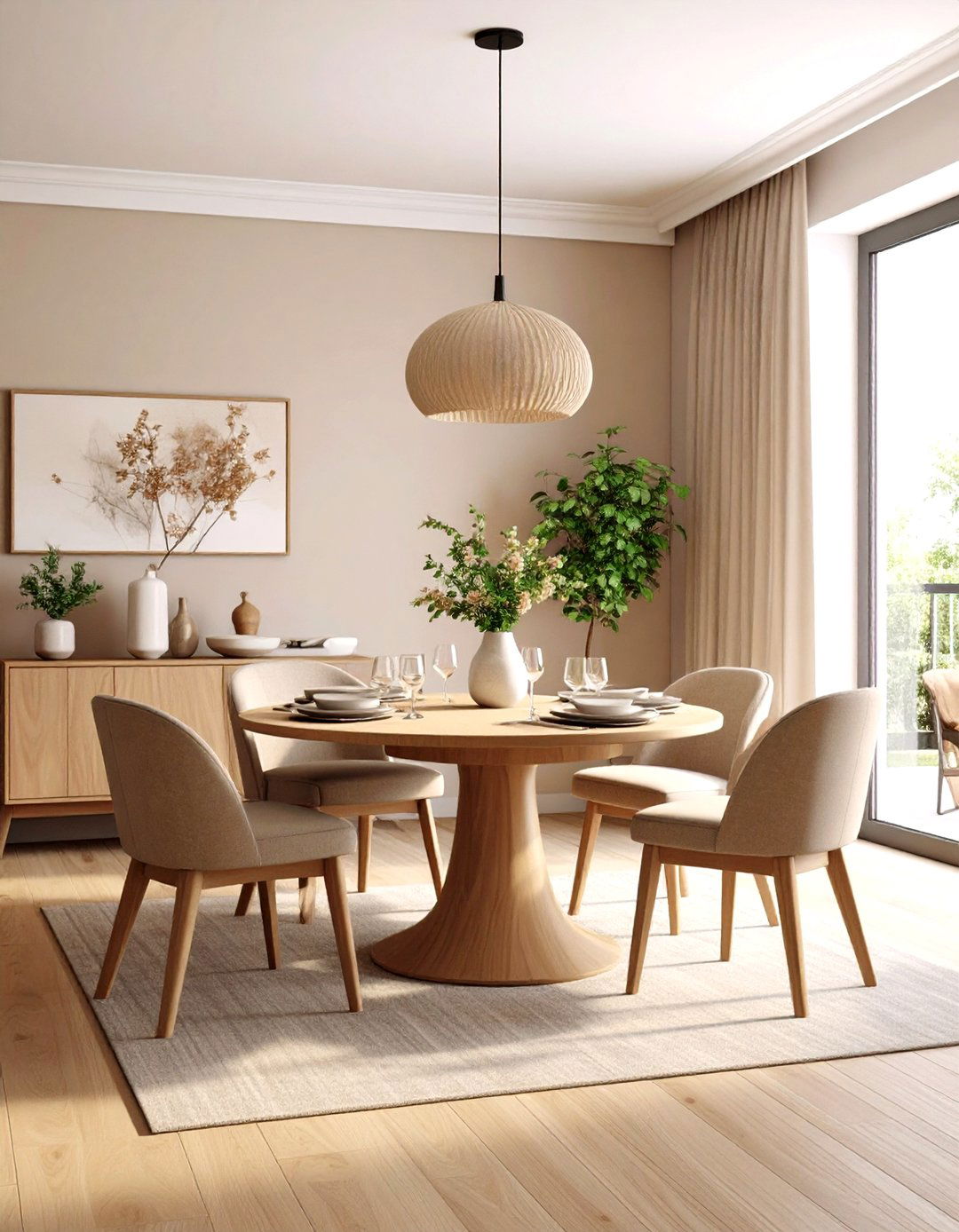



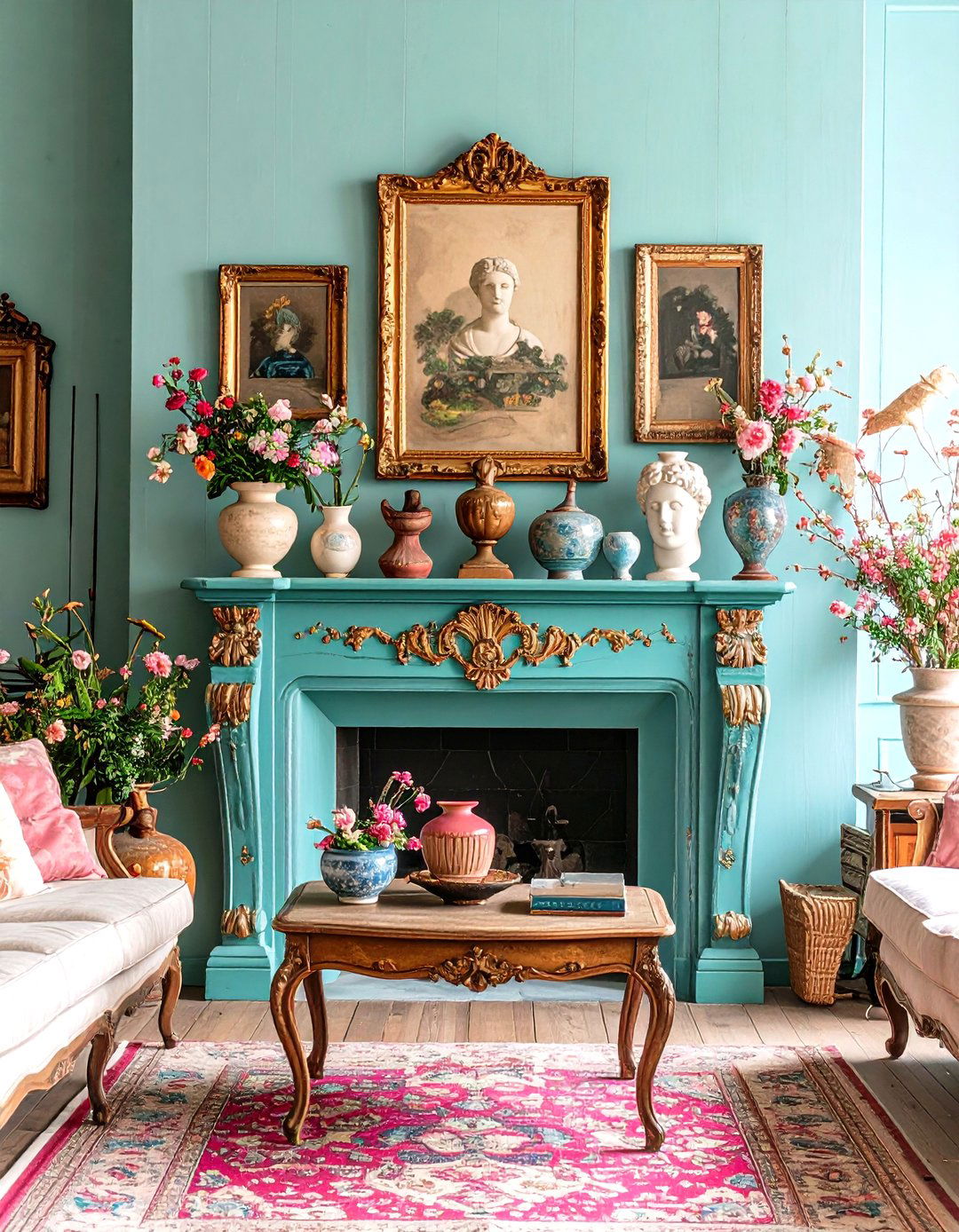
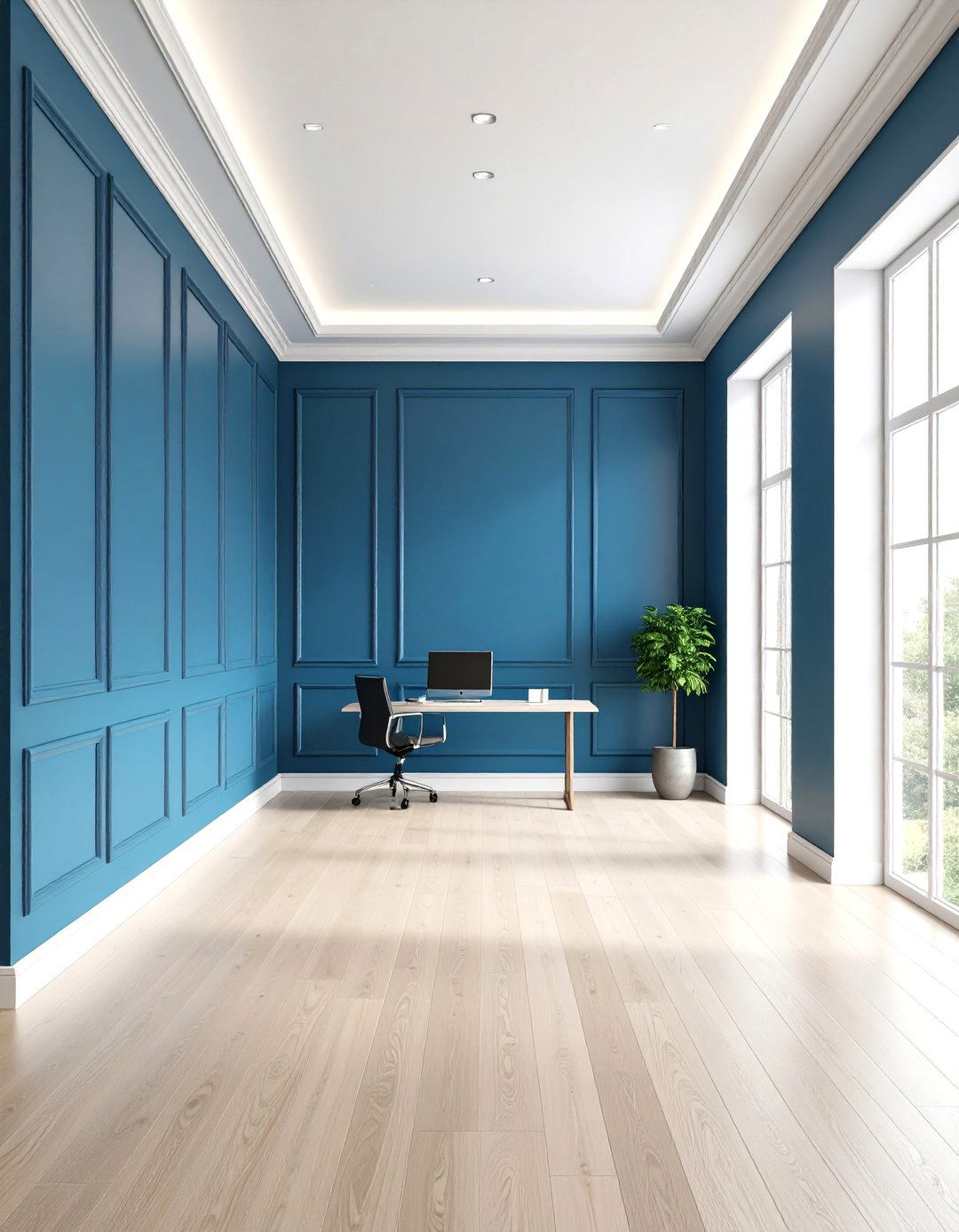
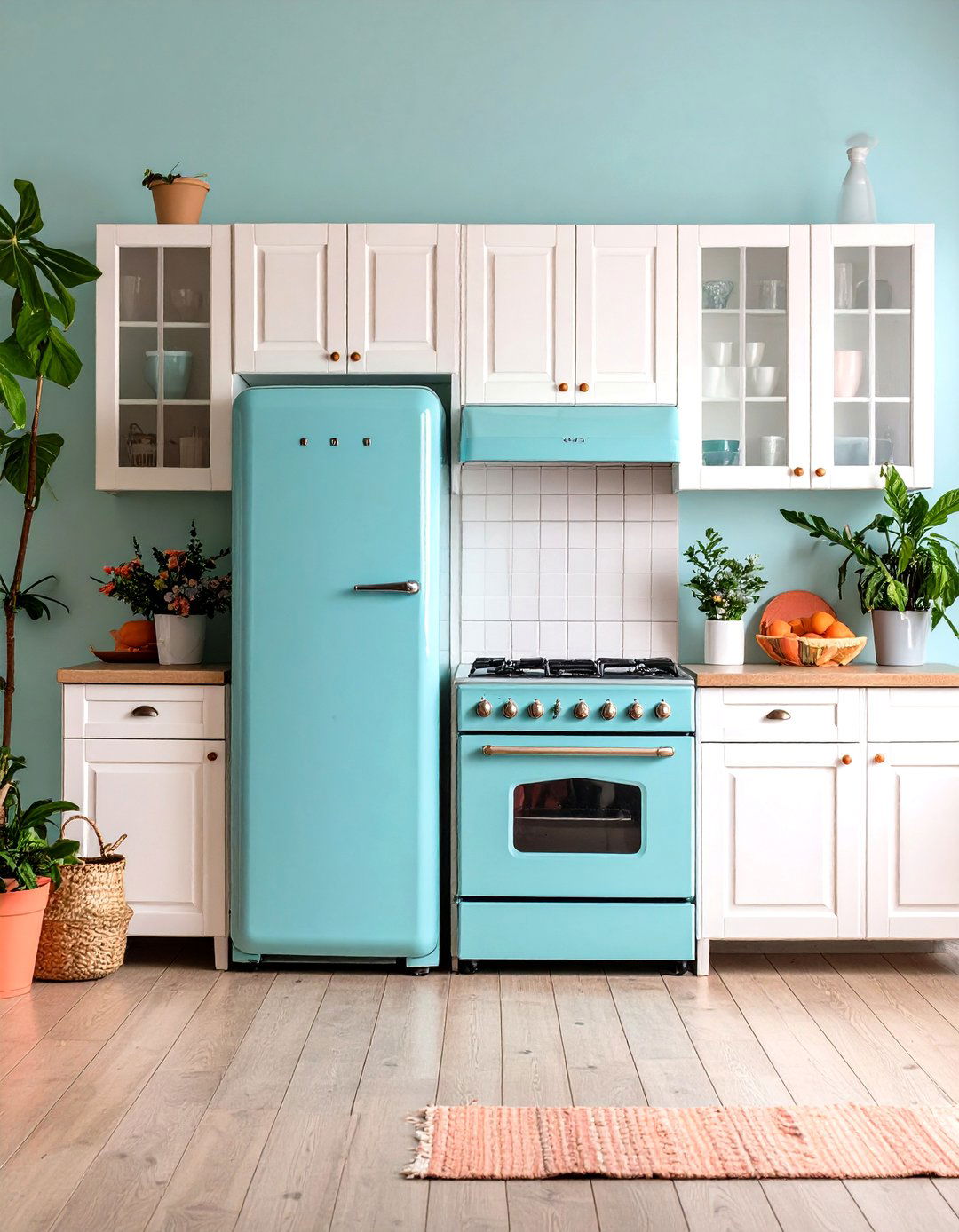
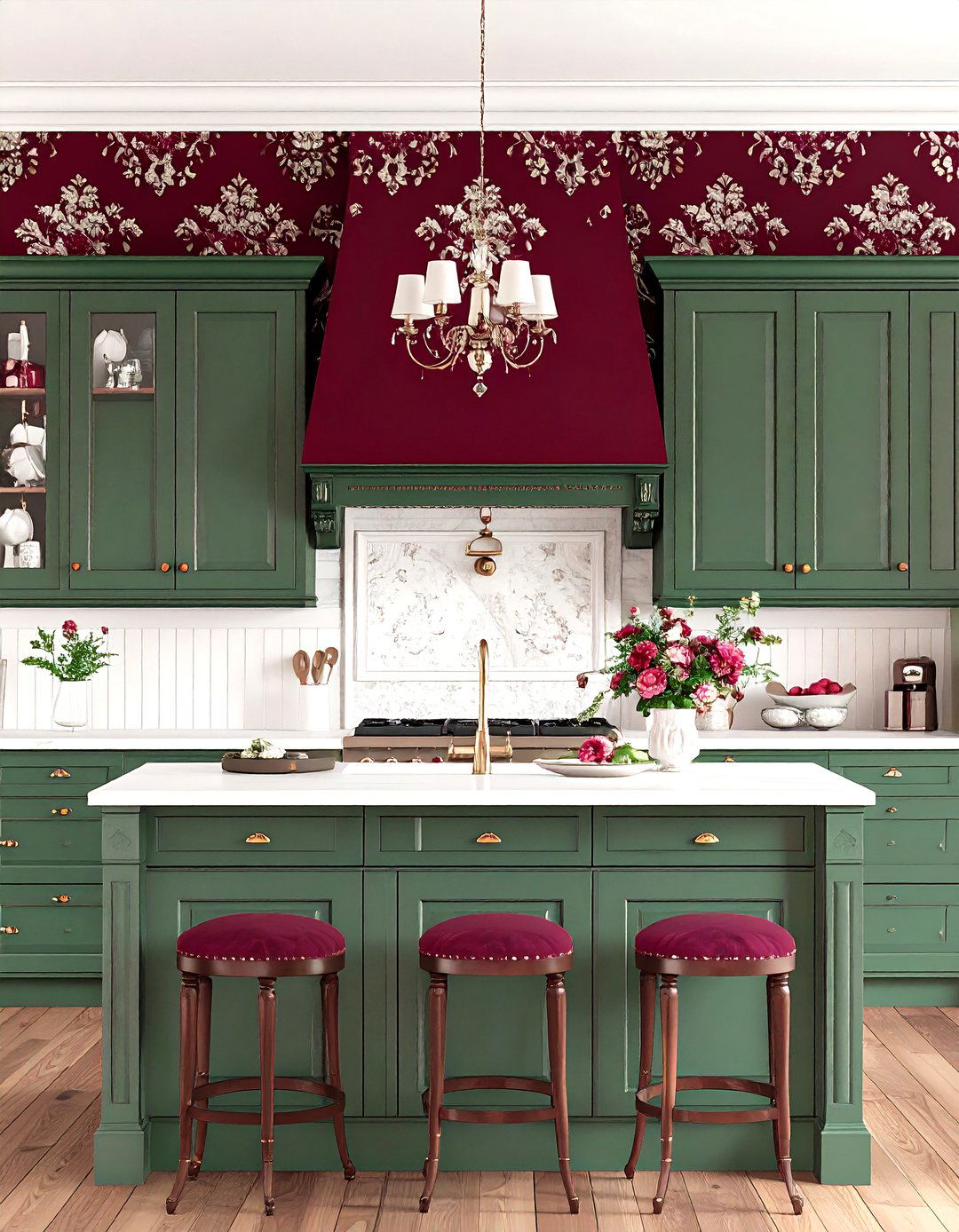
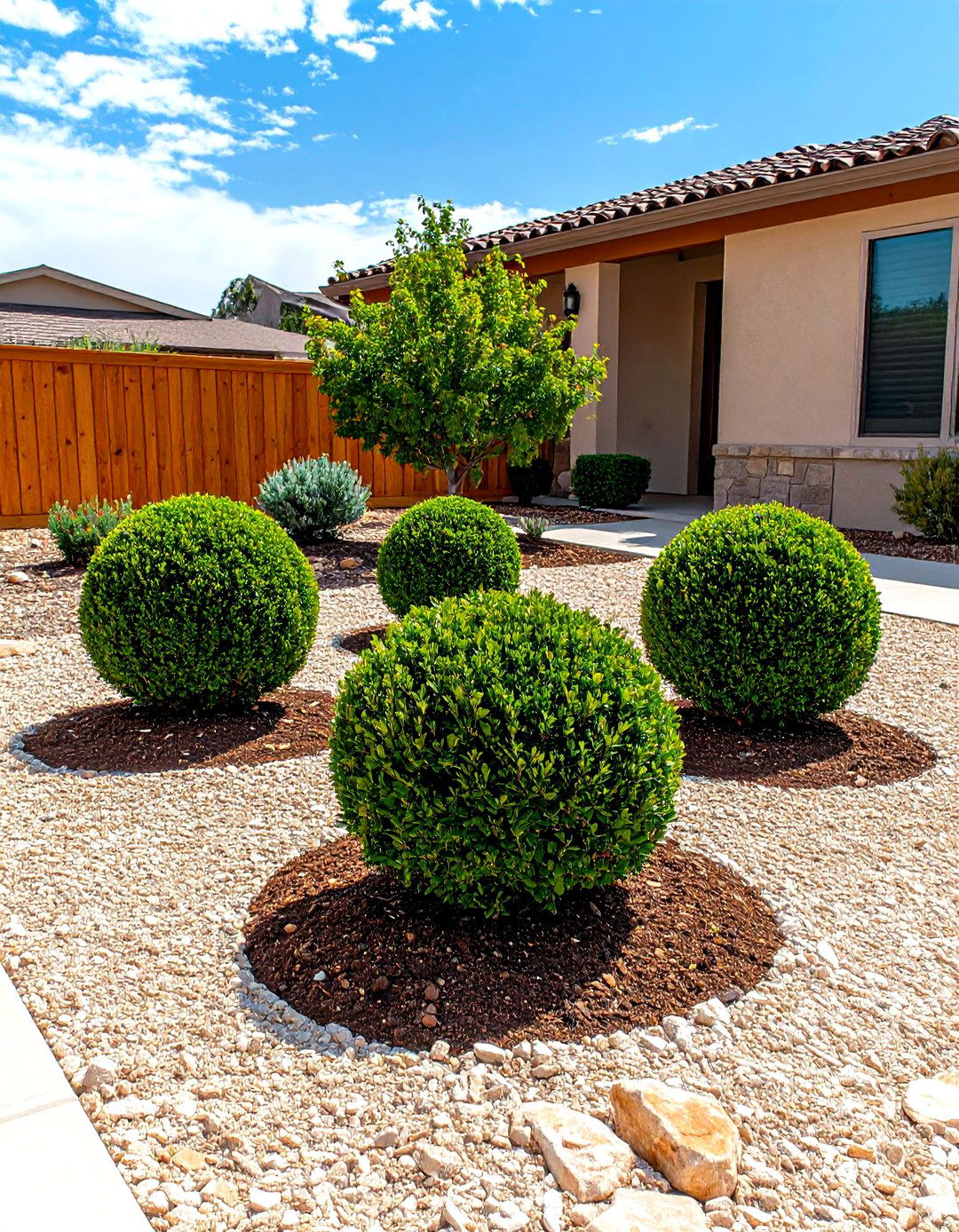
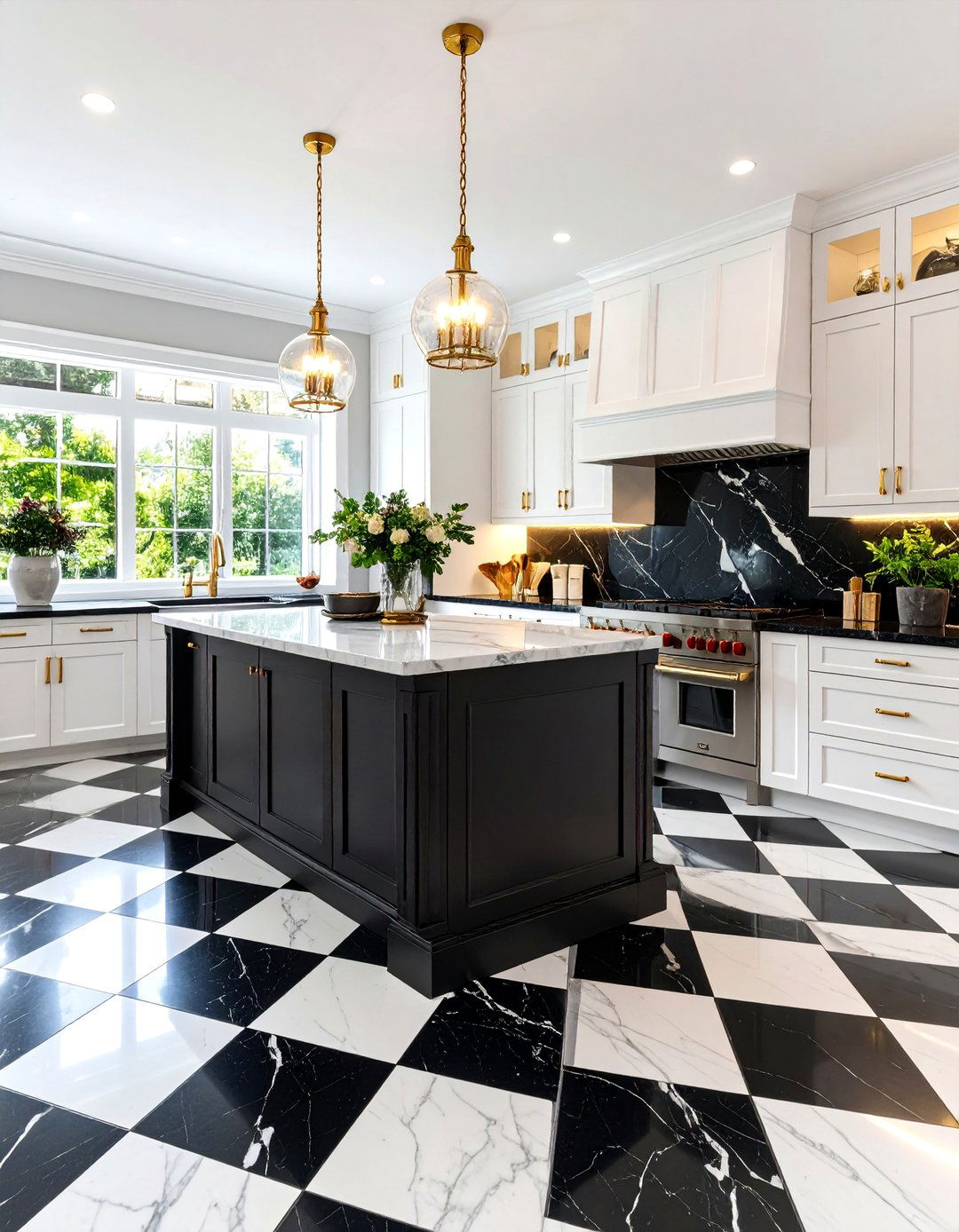
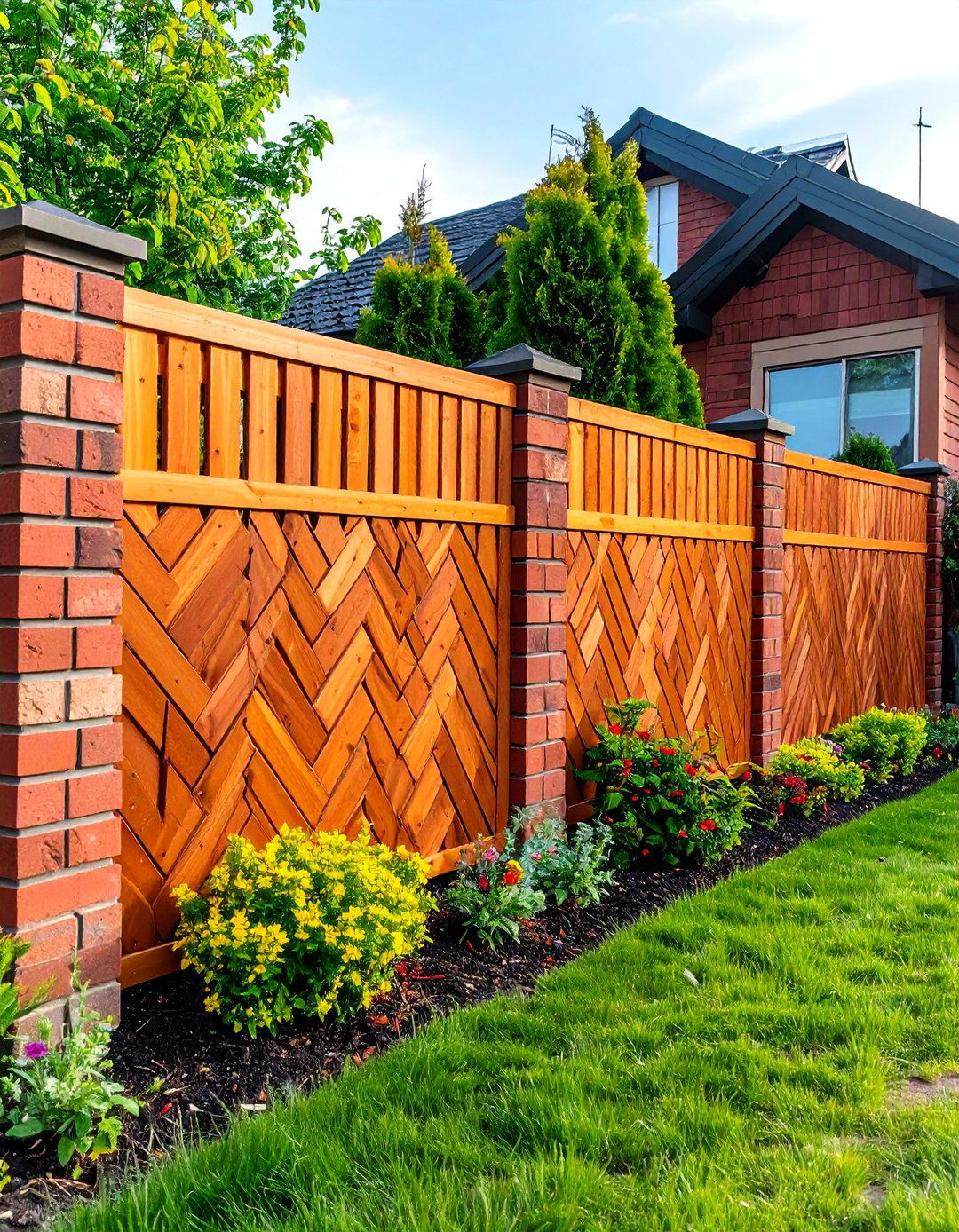
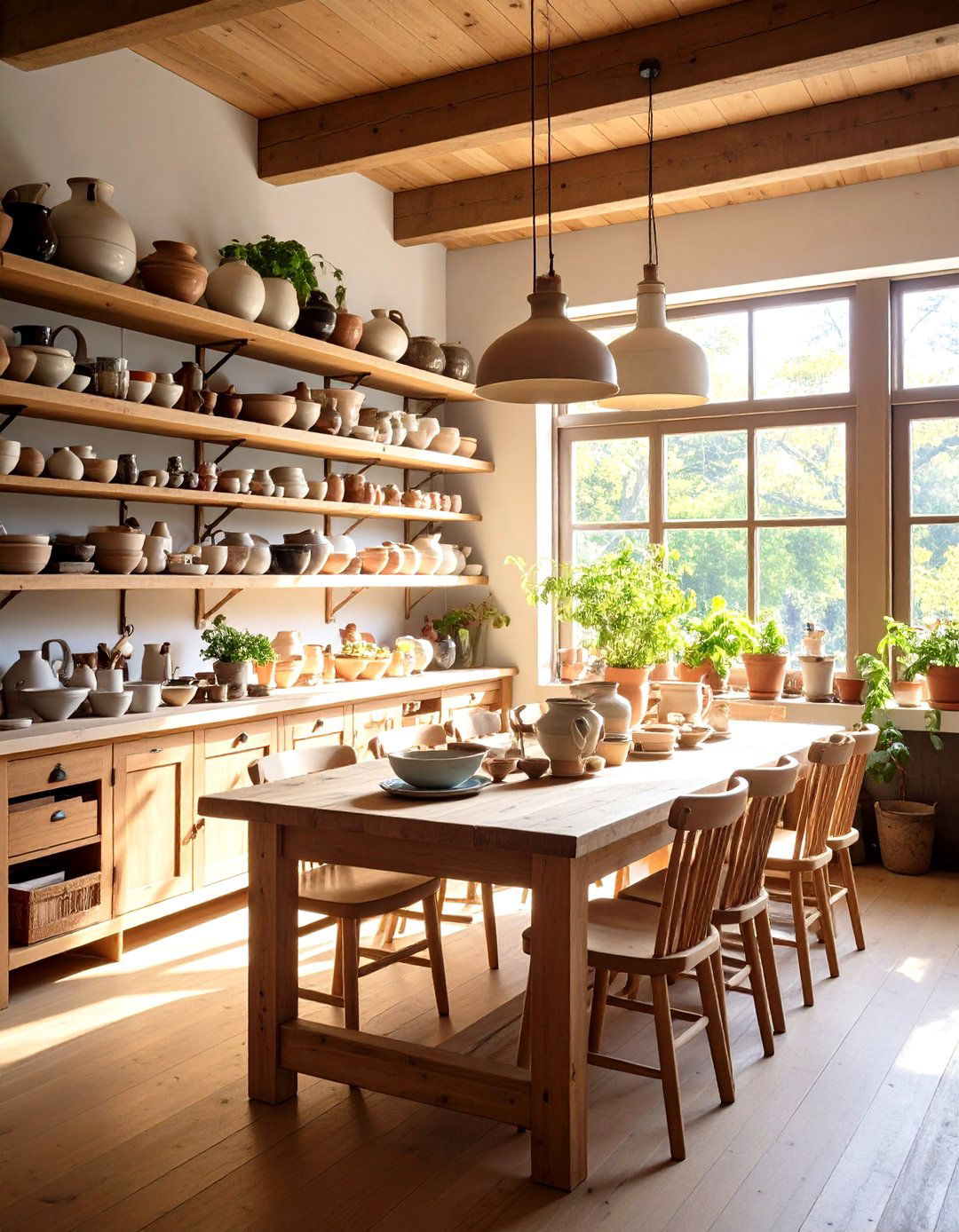

Leave a Reply